Сообщение Lee Miller in the bathroom of Adolf Hitler появились сначала на Old Pictures.
]]>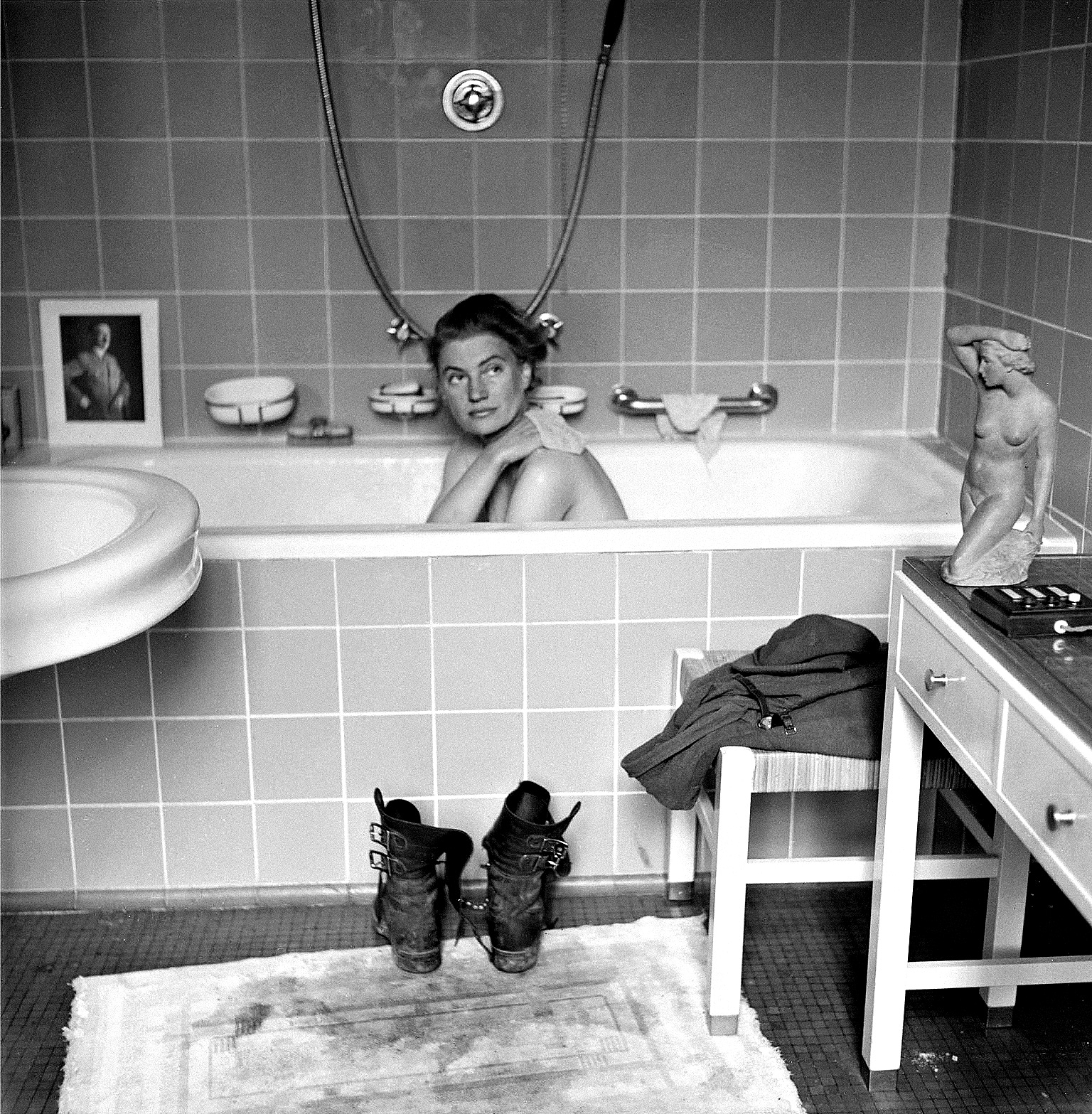 Somehow this photo of former-model Lee Miller in Hitler’s bathroom is one of the best-known WW2 photography. Its story is noteworthy, though. Photographers Lee Miller and David Sherman worked together during WWII. Miller shot for Vogue, Sherman shot for LIFE. They participated in the liberation of the Dachau concentration camp. The very next day, photographers entered Munich together with the 45th American division. Precisely speaking, Lee Miller didn’t shower in the secondary apartment of Adolf Hitler, which he used during his trips to Bavaria.
Somehow this photo of former-model Lee Miller in Hitler’s bathroom is one of the best-known WW2 photography. Its story is noteworthy, though. Photographers Lee Miller and David Sherman worked together during WWII. Miller shot for Vogue, Sherman shot for LIFE. They participated in the liberation of the Dachau concentration camp. The very next day, photographers entered Munich together with the 45th American division. Precisely speaking, Lee Miller didn’t shower in the secondary apartment of Adolf Hitler, which he used during his trips to Bavaria.
“Lee and I found an elderly gentleman who barely spoke English, gave him a box of cigarettes, and said, ‘Show us Munich,’” Sherman recalled in a 1993 interview. “He showed us around Hitler’s house, and I photographed Lee washing in Hitler’s bathroom.”
Lee Miller moved from the apartment of Hitler to the mansion of Eva Braun
Miller and Sherman lived in the apartment of Adolf Hitler for several days. After that, they even squatted in the house of Eva Braun, which was located nearby.
The photo of Lee Miller taking a bath in the Fuhrer’s apartment caused a flurry of indignation. Many considered the photographers’ behavior unethical. Lee Miller’s son, Anthony Penrose, commenting on the image, said: “Her boots covered in Dachau mud are on the floor are. She says she is a winner. But what she didn’t know was that a few hours later in Berlin, Hitler and Eva Braun would kill themselves in a bunker. ”
Many people noticed that Hitler decorated the bathroom with his own portrait and a classic statue of a woman. The New York Times described the photograph as “A woman caught between horror and beauty.” However, some researchers have interpreted the image more deeply, arguing that there is no single accidental detail in it. The pollution of Hitler’s bathroom with Dachau dust was a deliberate act. The Sherman bathing photographs in the same bath, taken by Lee Miller, are also symbolic since the photographer was a Jew.
Read more: Raising a Flag over the Reichstag by Yevgeniy Khaldei,1945
Commenting on the photos, Miller said she was trying to wash off the Dachau scents.
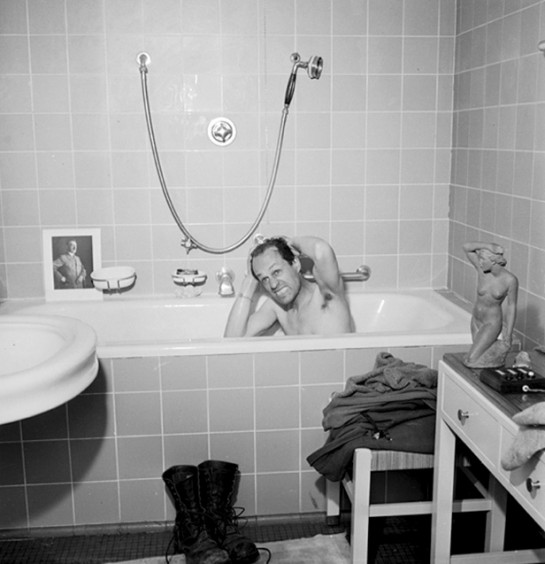
David Sherman, a jew, tried Hitler’s bathroom too

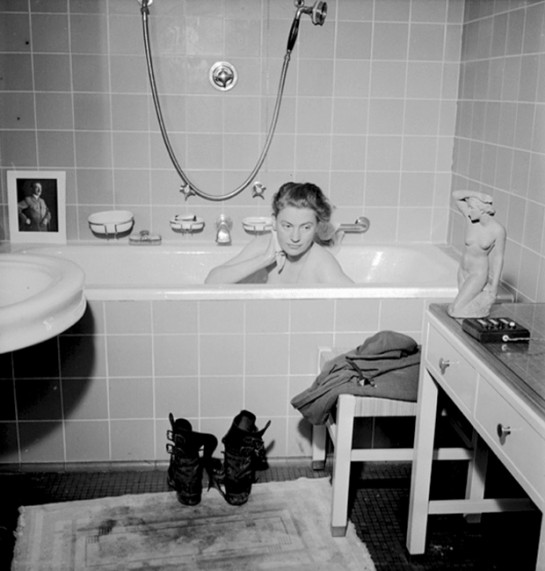
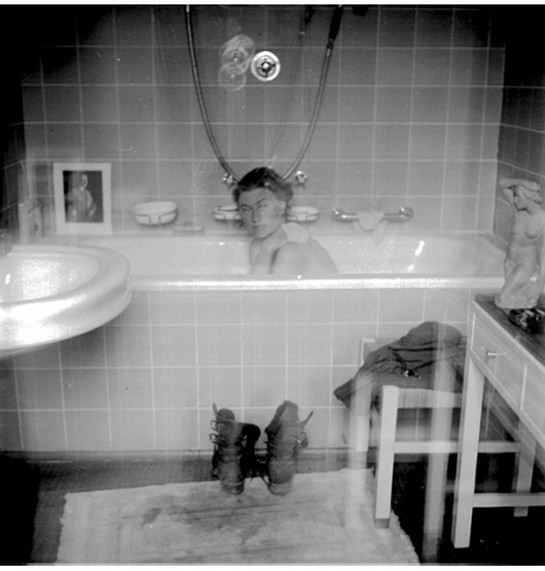
Сообщение Lee Miller in the bathroom of Adolf Hitler появились сначала на Old Pictures.
]]>Сообщение Adolf Hitler trains body language – unique historical photos появились сначала на Old Pictures.
]]>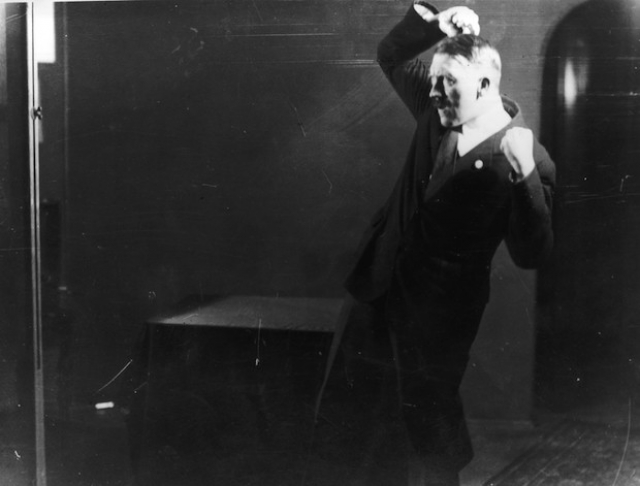 The infamous Adolf Hitler was an inspiring speaker and turned out to train his body language for this. Gestures accompany a good persuasive speech. Adolf Hitler knew it well, as his prominent public speaking was supported by body language. But few people know that Fuhrer carefully practiced gestures, postures, and diction. The preparation for the performances took so many resources that Hitler involved a personal photographer for his sessions.
The infamous Adolf Hitler was an inspiring speaker and turned out to train his body language for this. Gestures accompany a good persuasive speech. Adolf Hitler knew it well, as his prominent public speaking was supported by body language. But few people know that Fuhrer carefully practiced gestures, postures, and diction. The preparation for the performances took so many resources that Hitler involved a personal photographer for his sessions.
Heinrich Hoffmann (also known for these Fuhrer’s WWI photos) photographed Hitler view the footage, and evaluate his own image. Here’s how we’ve got this series of pictures in which dictator appears in very strange poses. Later, Heinrich Hoffmann used these portraits in his memoirs.
The photographs look almost photoshopped. Adolf Hitler looks more like a ballroom dancer or stage actor than a ruthless dictator. But it was a fair price for polishing his speaking skills that were so important during the elections’ campaign.
Let’s note that Adolf Hitler was a skillful politician and he was ready for some bold moves to get the voters’ sympathy. For example, he organized a very special photoshoot while wearing traditional Tyrollian shorts, very popular in Bavaria. Hitler didn’t like those shorts, that looked almost ridiculous. But he knew that people will pay attention and did to gain more popularity before the elections. A strong move that, among others, allowed the Nazi party to get absolute power.
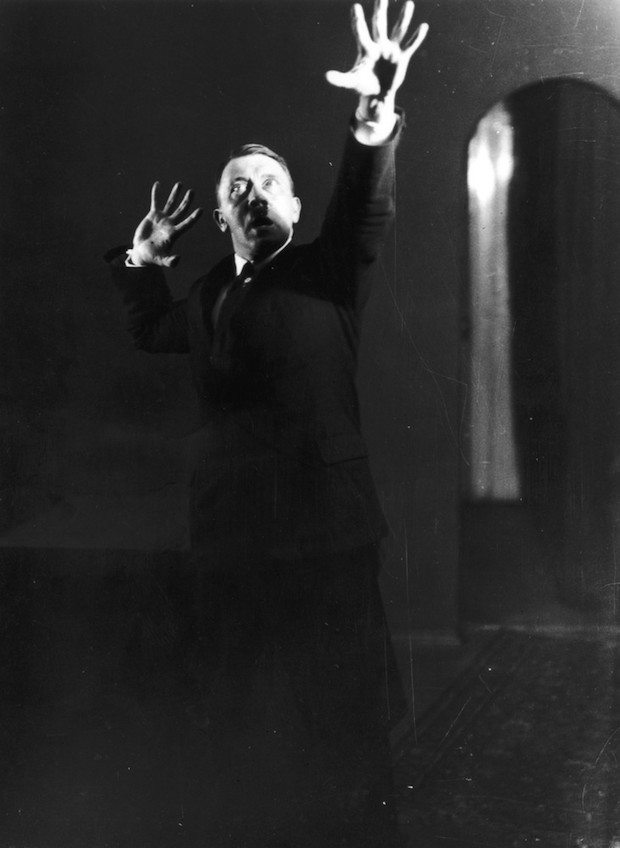
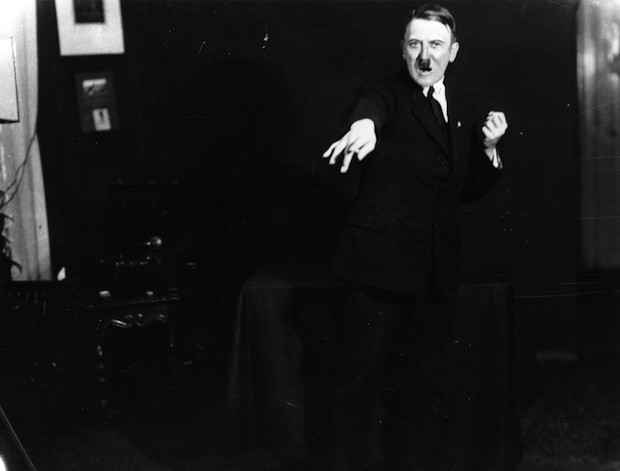
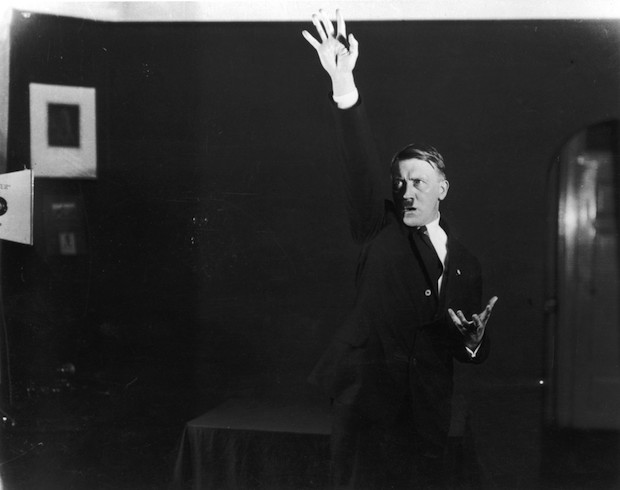
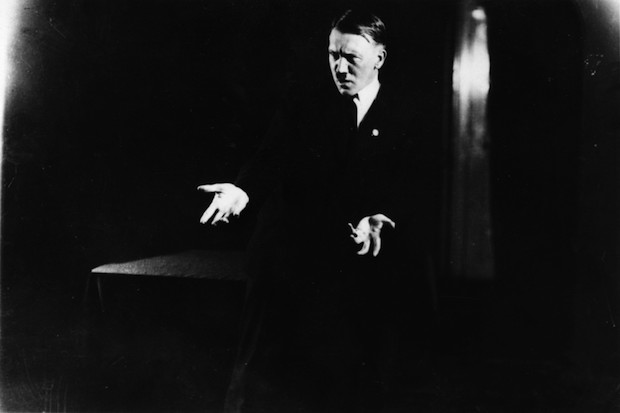
Сообщение Adolf Hitler trains body language – unique historical photos появились сначала на Old Pictures.
]]>Сообщение Eyes of hate: story behind iconic photo by Alfred Eisenstaedt появились сначала на Old Pictures.
]]>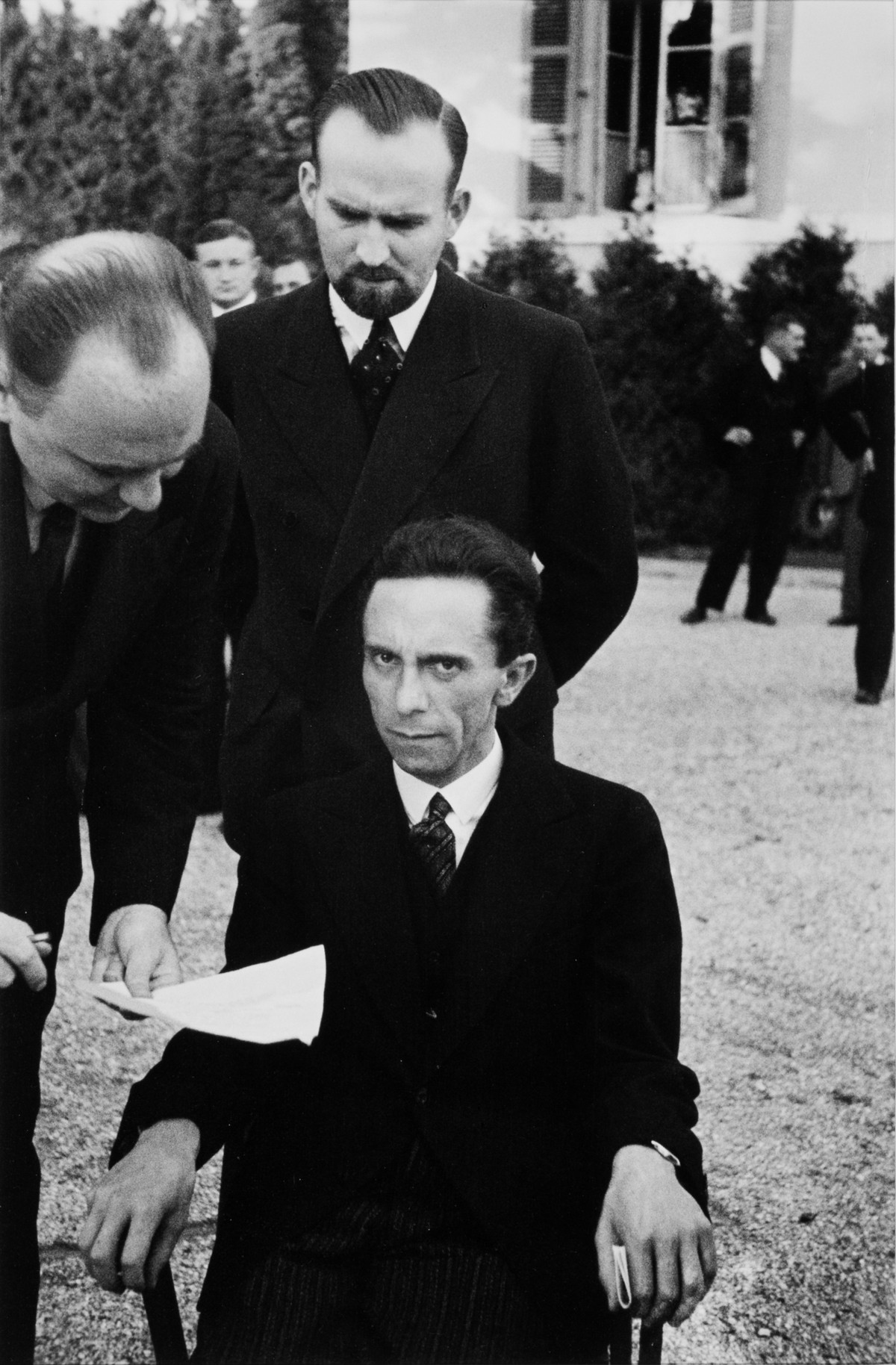
‘Eyes of hate’ is one of the iconic photos of the outstanding Germany-born photographer Alfred Eisenstaedt. Oldpics published his 64 of his most important pictures recently. ‘Eyes of hate’ photo stands among the others, and we decided to cover the story behind it.
The historical background
So, let’s get back to September 1933. Adolf Hitler has already taken all the power in Germany after winning the elections in January. The 3rd Reich has been proclaimed, the anti-jew and militaristic rhetoric became the mainstream.
Alfred Eisenstaedt worked for the Atlantic (it will soon transform into an Associated press) agency as a photo reporter. Here’s how he got accreditation to cover the League of Nations conference in Geneva. The place where Eisenstaedt captured the ‘Eyes of hate’ photo.
Facing the eyes of hate
“I found Dr. Joseph Goebbels In the hotel garden. By that moment, he has already occupied the position of Hitler’s propaganda minister,” Eisenstadt wrote in 1985. Goebbels was smiling, but not at me. He was looking at someone to my left. Suddenly he noticed me, and I took a picture of him. His expression changed immediately. These were the eyes of hate. Was I the enemy?’ Goebbels’ personal assistant Werner Naumann, with a goatee, and Hitler’s translator, Dr. Paul Schmidt, were standing behind him. We assume that one of them told the propaganda minister the photographer’s identity. “People asked what I felt taking pictures of these people. Of course, I wasn’t ok, but I do not know fear when I have a camera in my hands. “
Goebbels’ hostility towards the Alfred Eisenstaedt was due to his Jewish origin. The minister’s tense posture and a suspicious gaze directed directly at the camera clearly indicate Eisenstadt’s dislike. The propaganda minister truly shared the antisemitic views of his patron, Adolf Hitler.
The alternative name
“I could name this picture ‘From Goebbels with Love,’” the photographer continued. -When I approached him in the hotel garden, he looked at me with eyes of hate, as if he was waiting for me to disappear. But I haven’t disappeared.”
A couple of weeks later, Germany, quite the League of Nations, explaining that other countries discriminate against it. In fact, this meant Germany’s unwillingness to make compromises. It also testified to the League of Nations’ further ineffectiveness in resolving international disputes and preventing war conflicts.
Interestingly, Alfred Eisenstaedt captured his best-known ‘V-J day’ picture in 1945. It became the symbol of WW2 victory. While Joseph Goebbels ended his days committing suicide in May 1945.
Know more: All Pulitzer Prize photos (1942-1967)
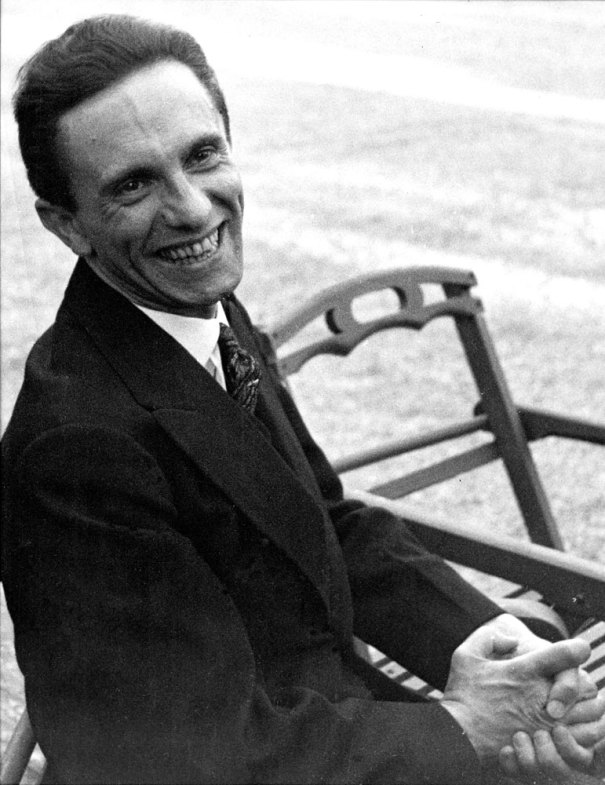
That’s how Joseph Goebbels before the ‘Eyes of hate’ scene
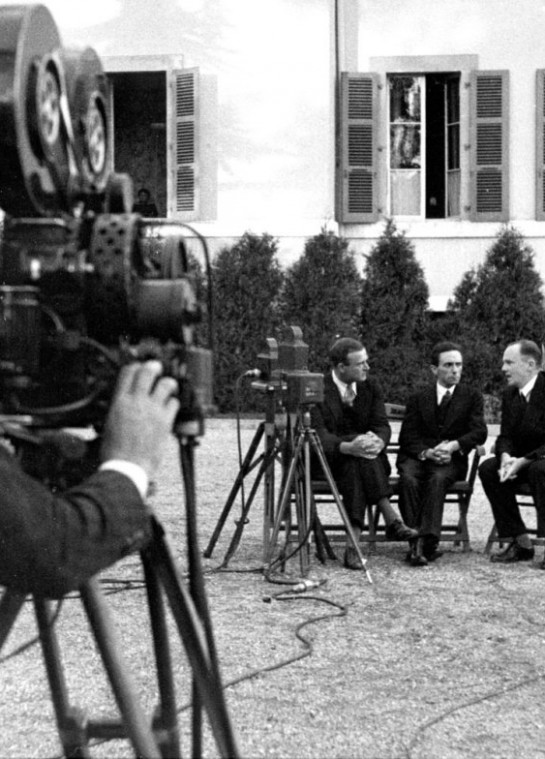
The scene during the League of Nations session
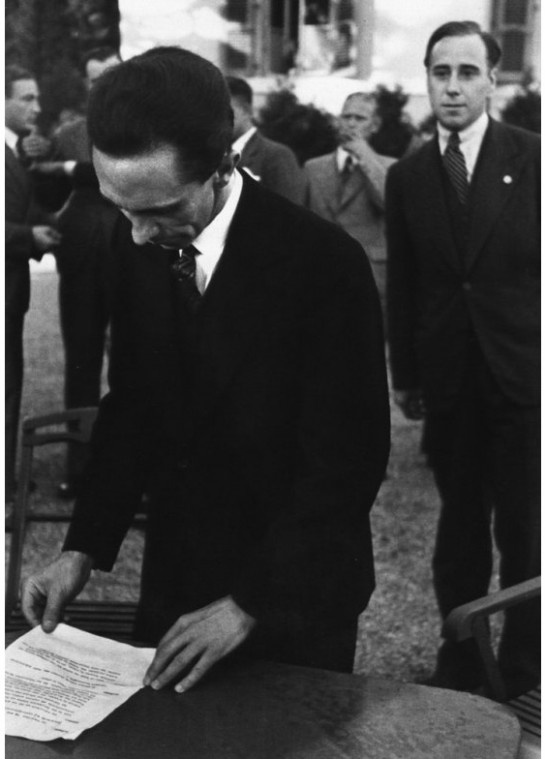
Joseph Goebbels truly shared antisemitic views of Adolf Hitler
Сообщение Eyes of hate: story behind iconic photo by Alfred Eisenstaedt появились сначала на Old Pictures.
]]>Сообщение Outstanding WW2 pictures (Part3: Emmanuil Evzerikhin) появились сначала на Old Pictures.
]]>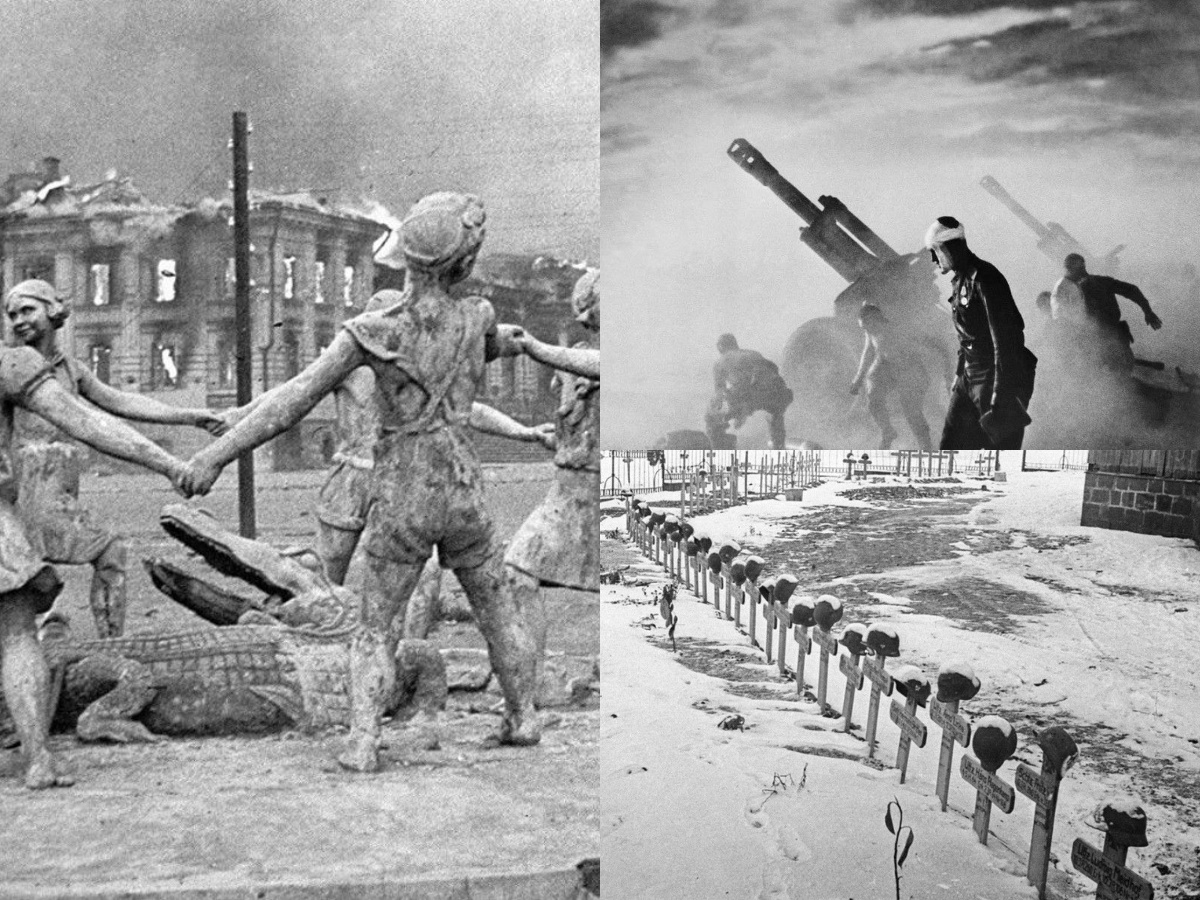 Oldpics continues to publish the most amazing WW2 pictures made by the Soviet photographers. It’s the third volume of this series.
Oldpics continues to publish the most amazing WW2 pictures made by the Soviet photographers. It’s the third volume of this series.
Here you can check previous publications:
Outstanding Soviet WW2 pictures (Part I: Max Alpert)
Outstanding Soviet WWII pictures (Part 2: Dmitri Baltermants)
Now let’s take a look at WW2 pictures of Emmanuil Evzerikhin. He has some iconic world-famous photography in his portfolio too. We mean his photo of a fountain with dancing figures of children in the middle of ruined Stalingrad. This image became another gloomy symbol of WW2. Yevzerikhin’s scenes are generally atypical. Yes, there are many masterful combat photographs, but when selecting the brightest ones, you will pay attention to their symbolism, meaningfulness, whether it’s the cemetery of Hitler’s soldiers in liberated Stalingrad or the aircraft resembling a huge corn cob.
The road to combat photography
There was a lack of photo reporters in the USSR when WW2 broke out. Here’s how TASS (Russian version of AP) invited Emmanuil Evzerikhin to shoot war chronicles for them. He went through the entire war, filming many significant historical events. During the Battle of Stalingrad, Emmanuil became a real photo poet, as photo colleagues called him.
The Stalingrad series of photographs by Evzerikhin became the master’s visiting card; simple and expressive scenes grabbed editors’ attention and hit the print uncountable times.
Evzerikhin captured the real, hungry, and destroyed the city of Stalingrad and its people. Panoramas of a burning city with “blinded” windows of houses; the frightening emptiness of extinct streets; Pictures of captured Germans are with despair in their eyes. Those WW2 pictures make you empathize with people who have become victims of the war. Frozen, miserable, wrapped in rags, and lined up in uneven ranks. The soldiers wander through the white snow to nowhere, their faces and figures leave only the feeling of the monstrosity of any war.
Emmanuil Evzerikhin participated in the Battle of Konigsberg, the liberation of Minsk. He filmed the battles of the cities of Poland and Czechoslovakia, including the bloody Prague operation.
Read more: 100 most important pictures in history
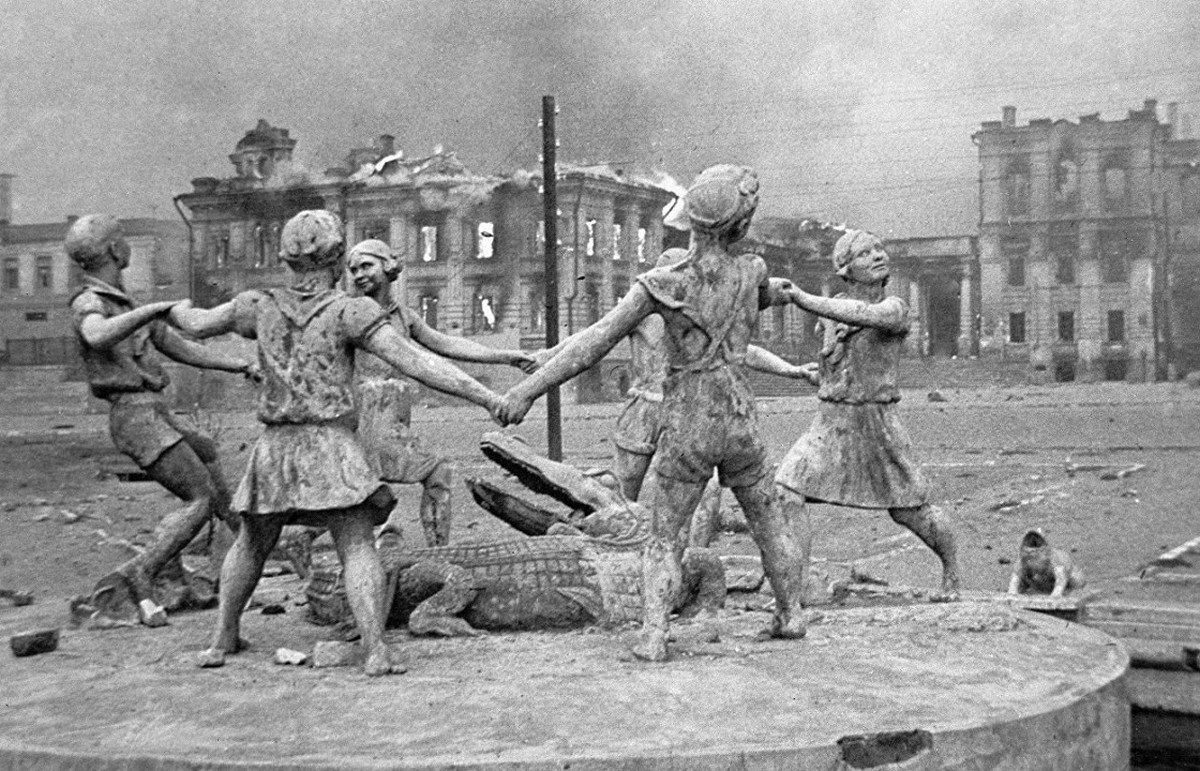
Fountain Children’s round dance in Stalingrad after the raid of German aircraft, 1943
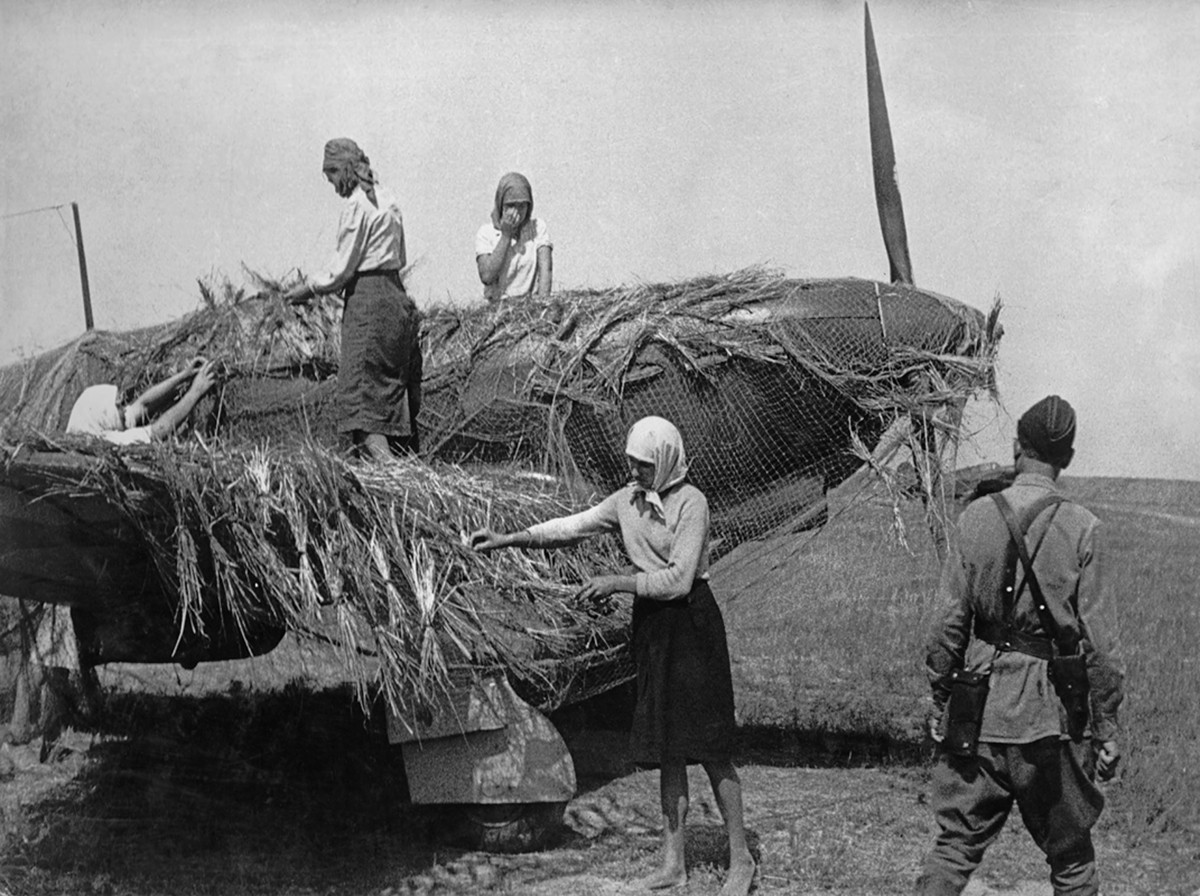
Women camouflage the Soviet Yak-1 fighter at the airfield (1941)
Boeing factory disguised during WWII in pictures
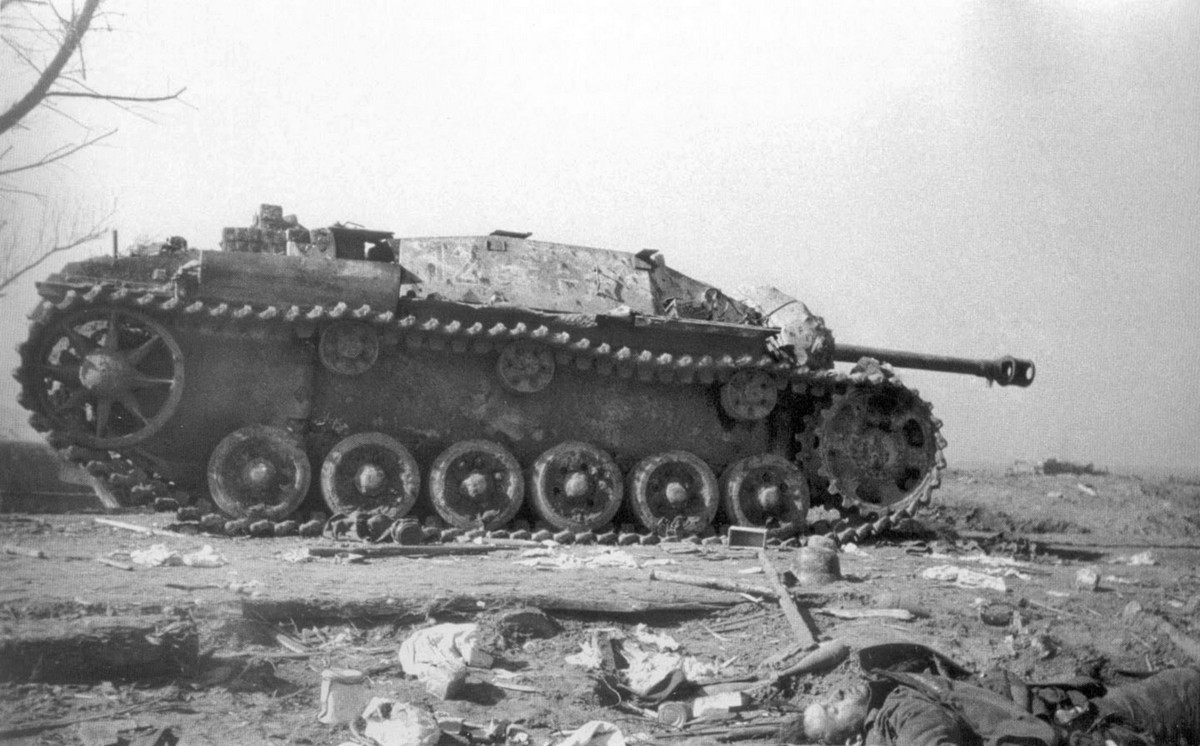
The StuG III assault gun knocked out in Konigsberg and the killed German soldier. Germany (1945)
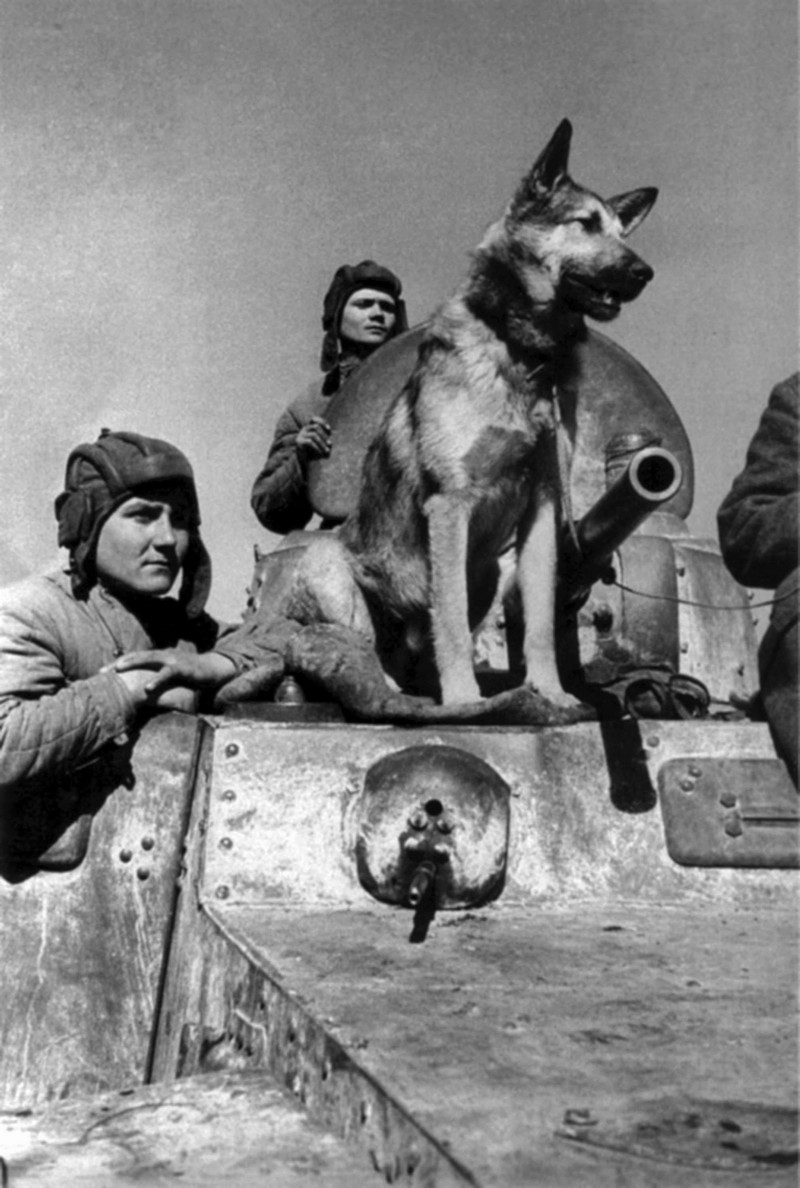
The crew of the BA-10 armored car with a shepherd
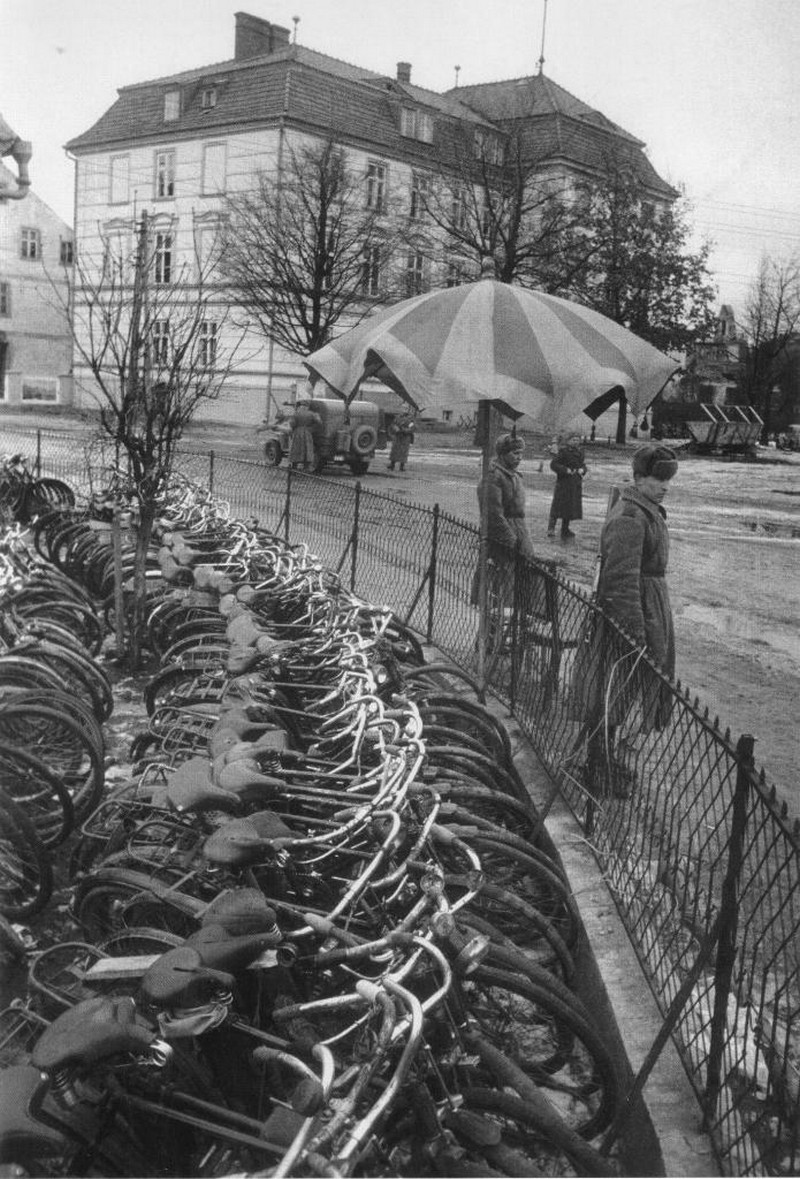
Soviet collection point for captured bicycles in the city of Bischofsburg. Poland (1944)
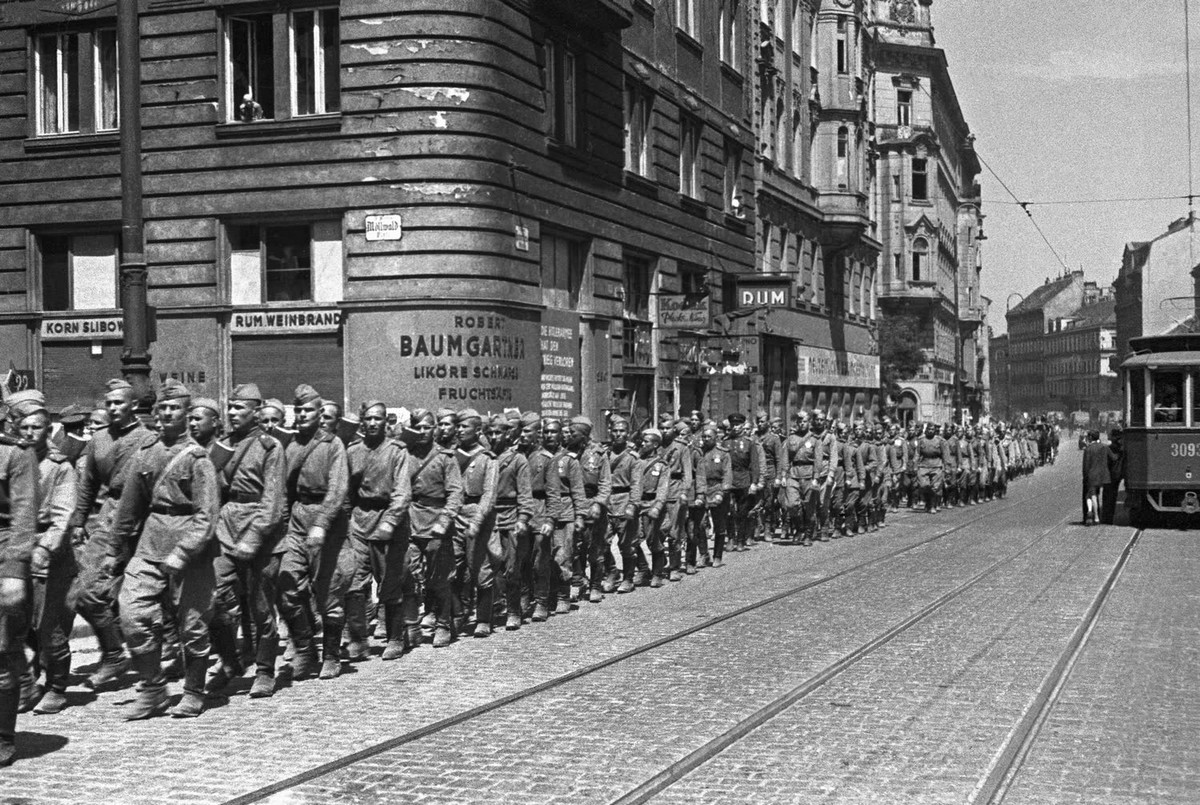
Red Army soldiers march at the Favoritenstrasse in Vienna (1945)
Read more: Vienna in 1945: Noteworthy pictures from soviet archives
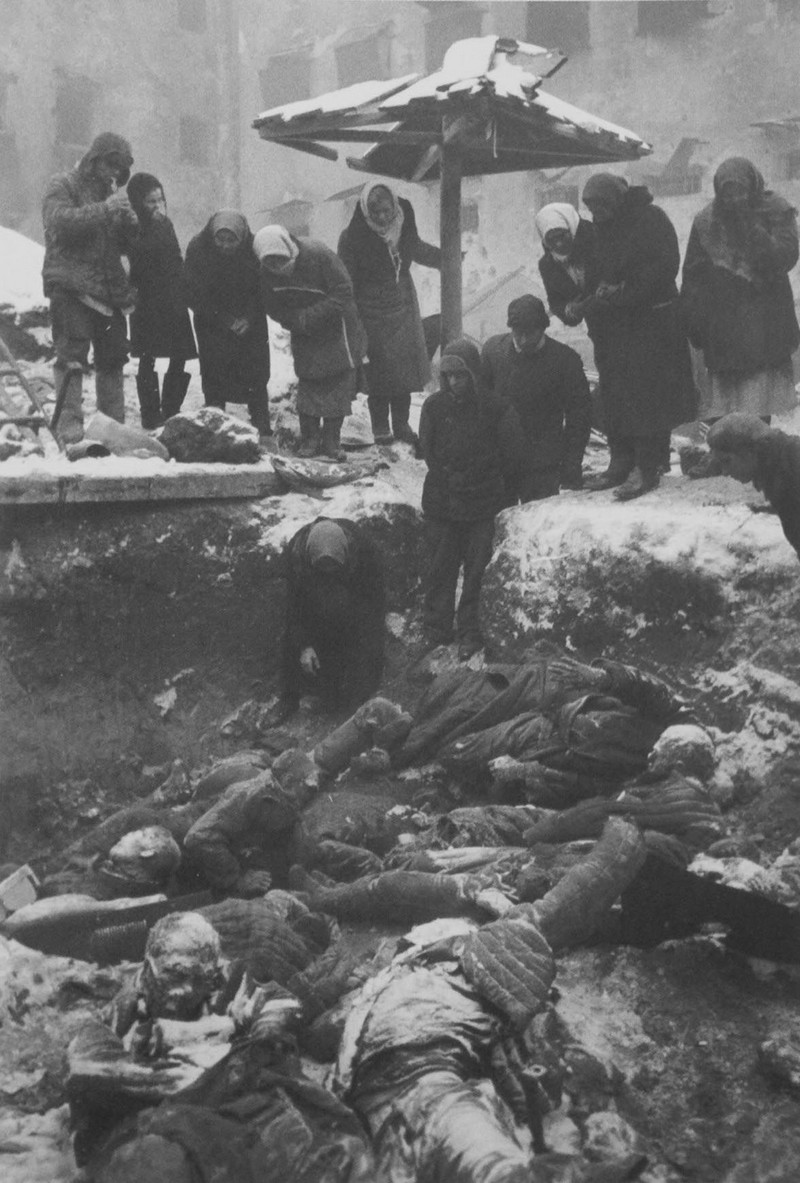
People of Rostov-on-Don in the courtyard of the prison identify relatives killed by the German army (1943)
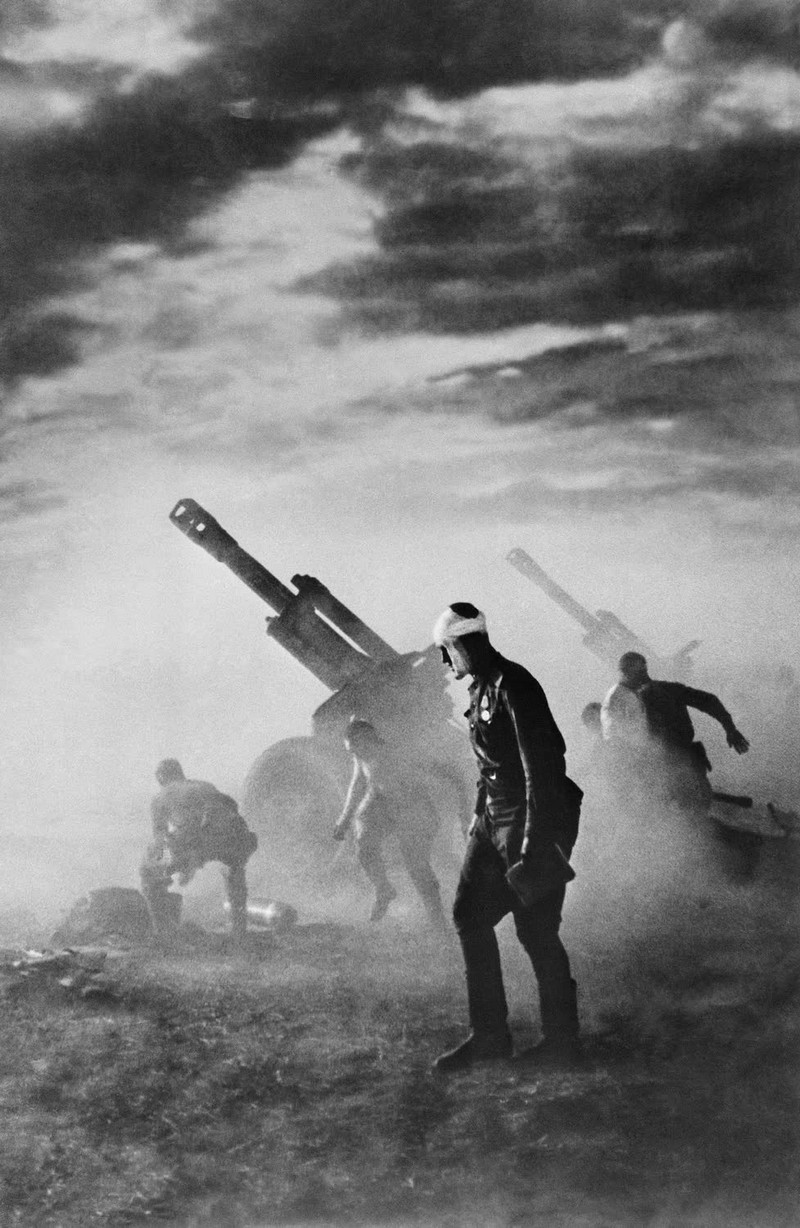
Battery of Soviet 152-mm D-1 howitzers firing at German troops in Belarus (1944)
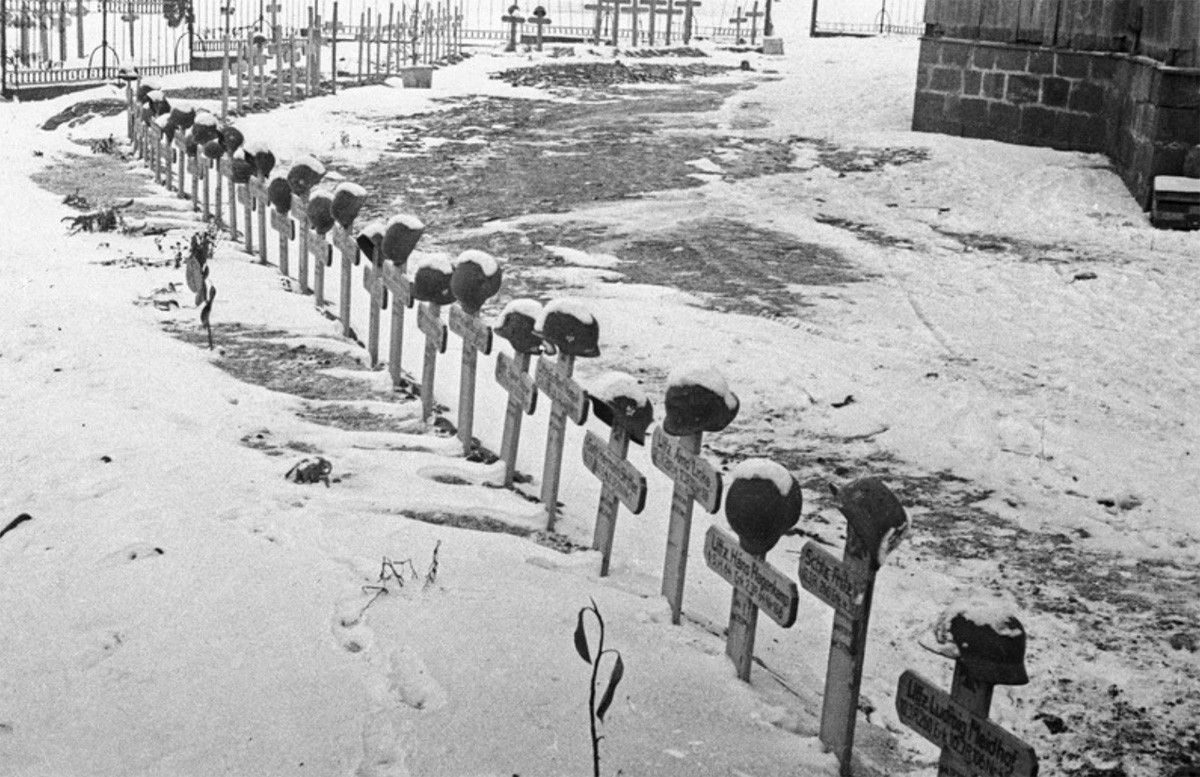
German cemetery in a village near Stalingrad (1942)
Сообщение Outstanding WW2 pictures (Part3: Emmanuil Evzerikhin) появились сначала на Old Pictures.
]]>Сообщение Nazi Rally in Madison Square Garden in pictures, 1939 появились сначала на Old Pictures.
]]>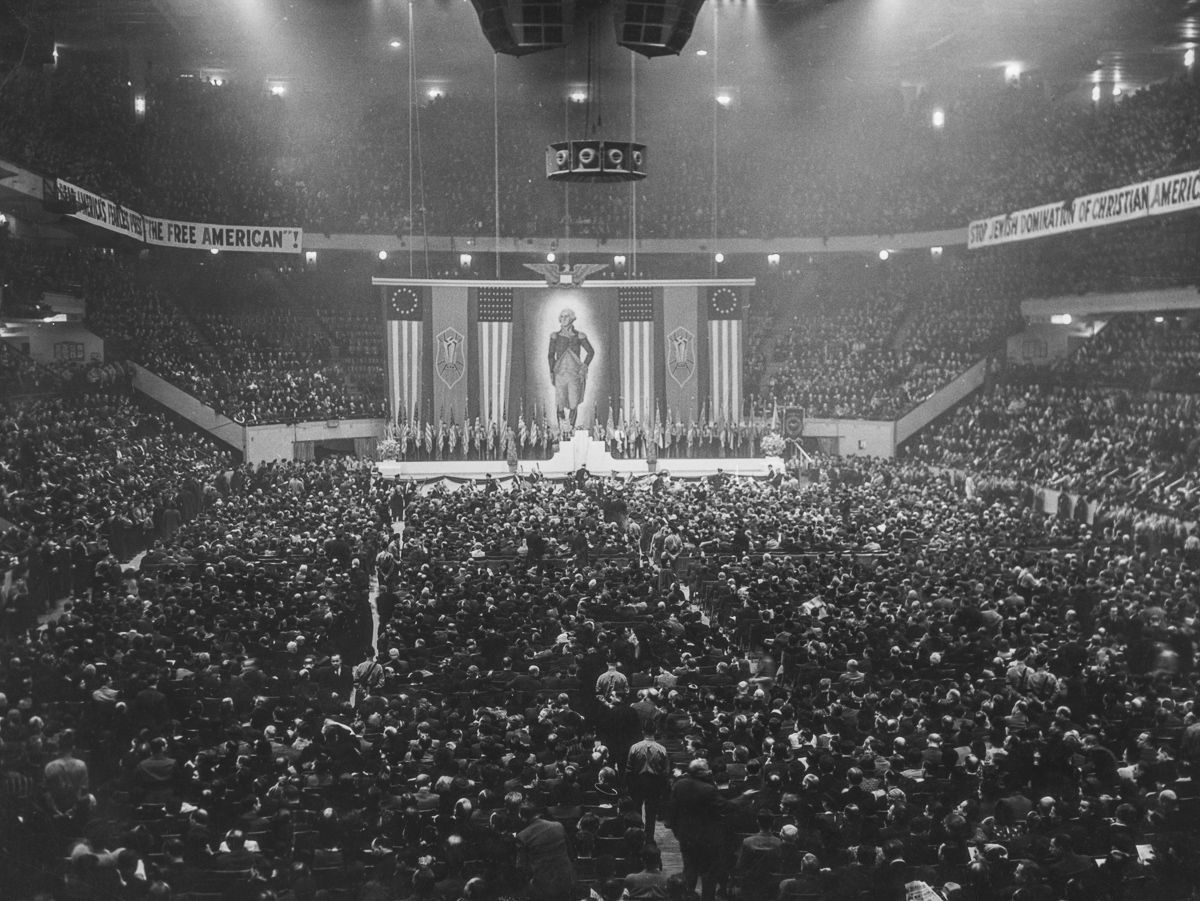 Could you ever believe that American Nazi followers organized a huge rally event in New York, in Madison Square Garden, just several months before Hitler invaded Poland?
Could you ever believe that American Nazi followers organized a huge rally event in New York, in Madison Square Garden, just several months before Hitler invaded Poland?
The truth is that this rally in Madison Square Garden wasn’t the first event that Nazi supporters staged in New York. There were many more, and here are some noteworthy pictures and facts.
Silent Nazi invasion
In January 1933, Adolf Hitler became Chancellor of Germany, and soon the Nazis controlled the entire country. They missed no chance to gain influence outside Germany. Here’s why Deputy Fuhrer Rudolf Hess instructed the German-American immigrant Heinz Spanknobel to form a powerful fascist structure in the United States.
In July 1933, Spanknobel united two small groups to form the Friends of a New Germany. He relied on German citizens and German-Americans who were part of the fraternity. The new organization even picketed the largest German-language newspaper offices in New York, demanding Nazi-sympathetic articles, advocating for a boycott of Jews in German factories. They wore the swastika-covered uniforms during all these events.
The end of the ‘Friendship.’
In October 1933, Spanknobel was deported from the US. Two years later, Hess urged the Friends’ leaders to return to Germany and all German citizens to leave the organization.
Nonetheless, the organization’s followers formed a new one, that had no links to the German government. It was the German-American Bund. The organization continued its anti-Semitic and anti-communist campaigns, covering them with patriotic pro-American symbols, holding portraits of George Washington, the “first fascist.”
High tension during the rally in Madison Square Garden
The German-American Bund reached its peak on February 20, 1939, when about 20,000 of its members gathered for the real Nazi Rally in Madison Square Garden. The leader of the organization Fritz Kuhn criticized Roosevelt, calling the policy of the “New Deal,” “the Jewish course,” and Roosevelt himself – Rosenfeld.
Some 80,000 anti-Nazi protesters outside the Madison Square Garden clashed with police while breaking into the building and closing the rally.
Note that the late 1930s was a specific time in the International relationships towards Germany. While many people realized the Nazi government’s aggressive nature, the politicians acted in a different, mild way. It was ok to greet the public with the Nazi salute during the sports events. Coca-cola advertised itself in Germany, and Henry Ford was fine to accept a German order from Nazi official’s hands.
The Bund’s days ended at the end of 1941 when the United States entered the war against Nazi Germany.
Read more: 100 most important pictures in history
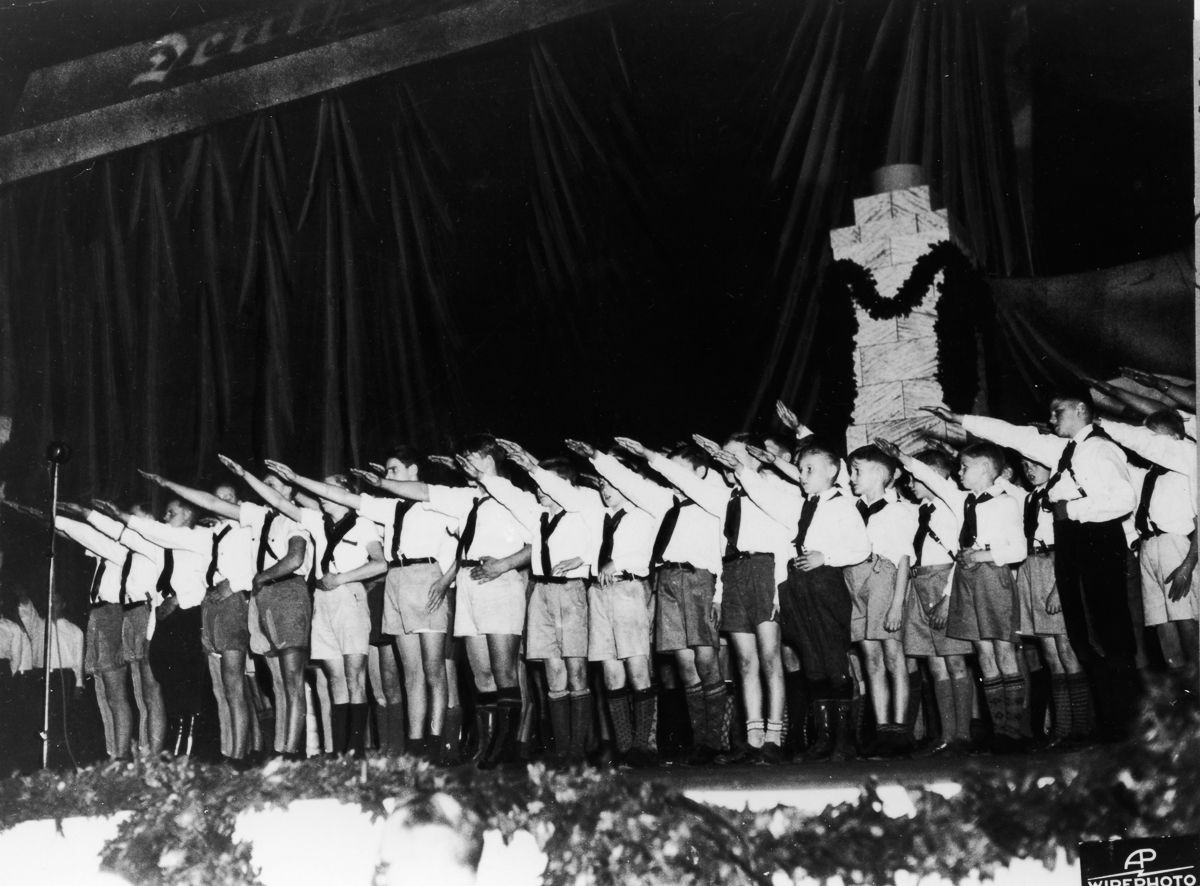
US kids greeting the public with a Nazi salute
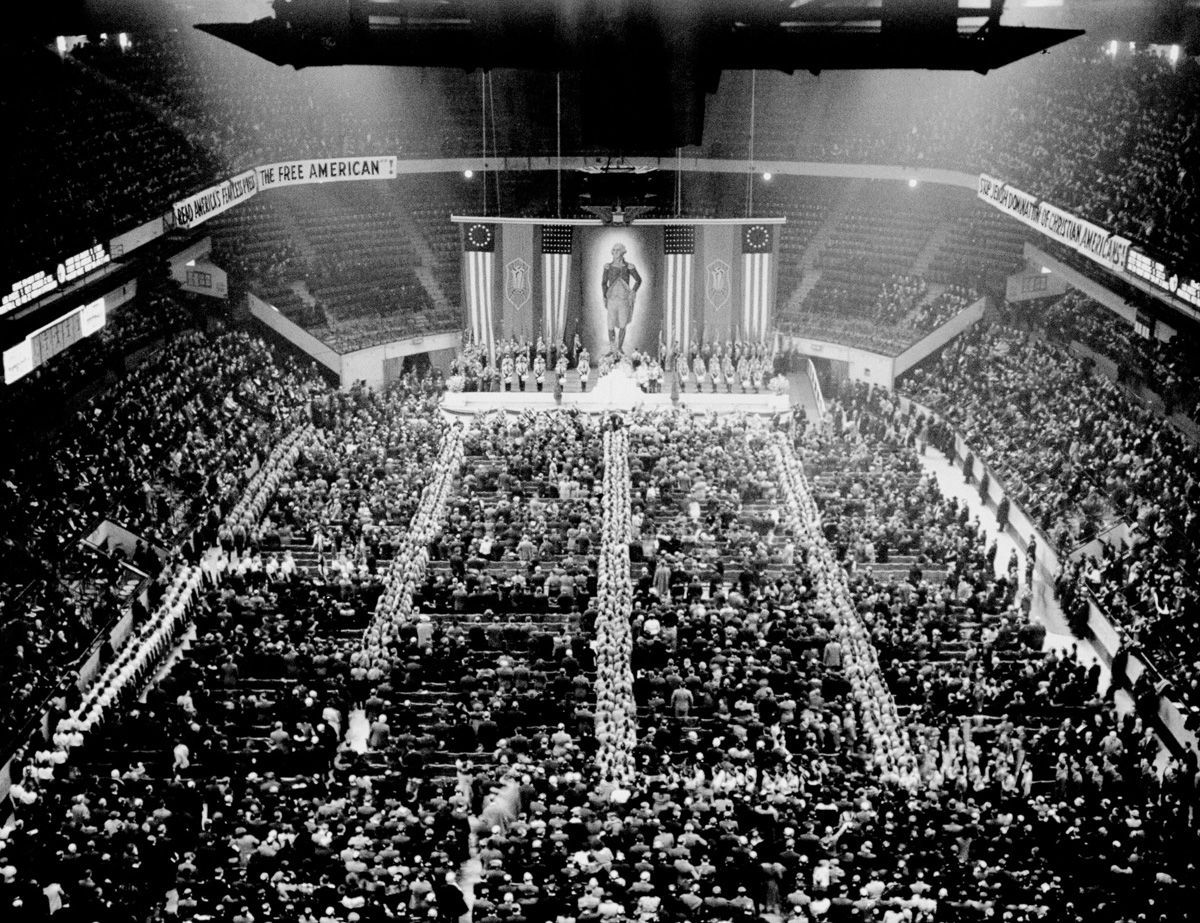
The Rally of 1939
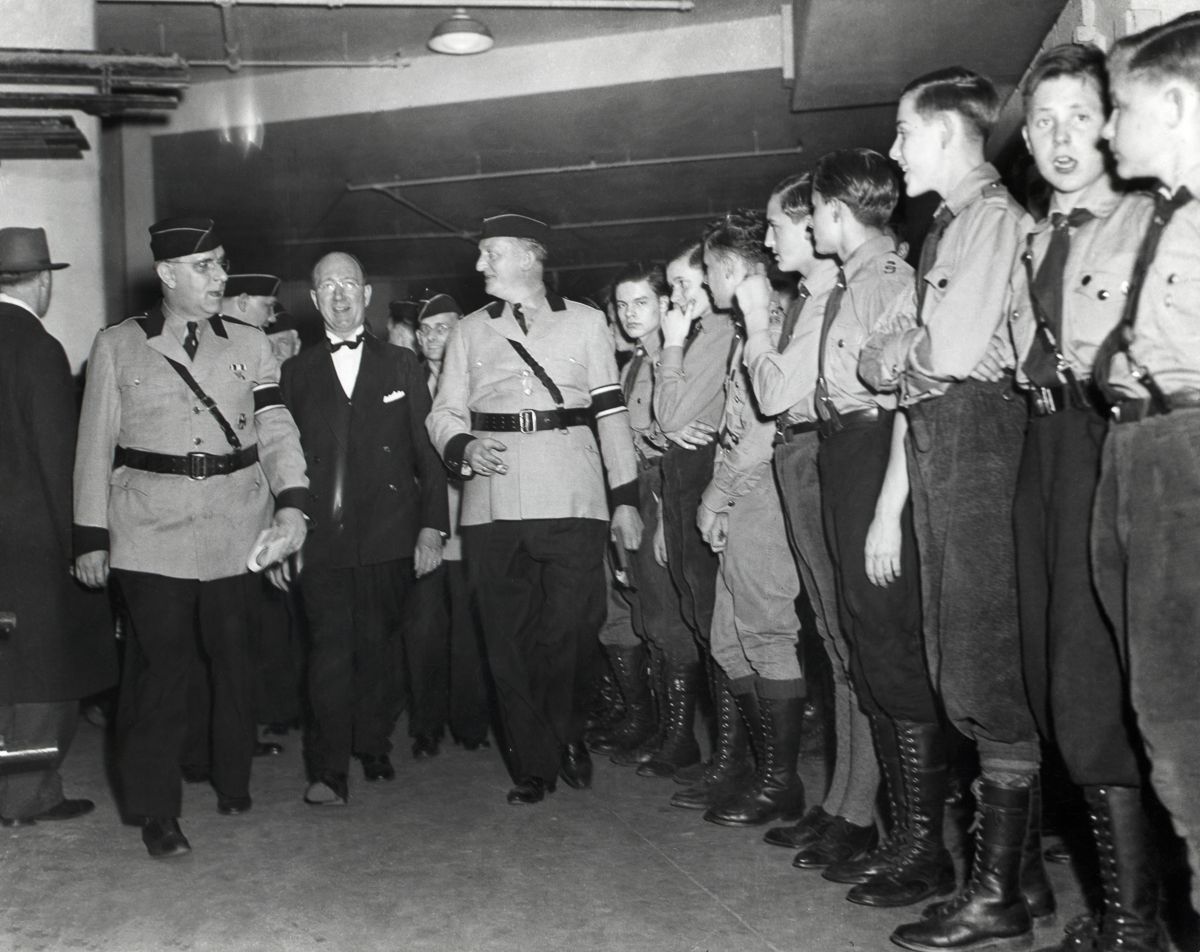
Speakers arriving the Rally
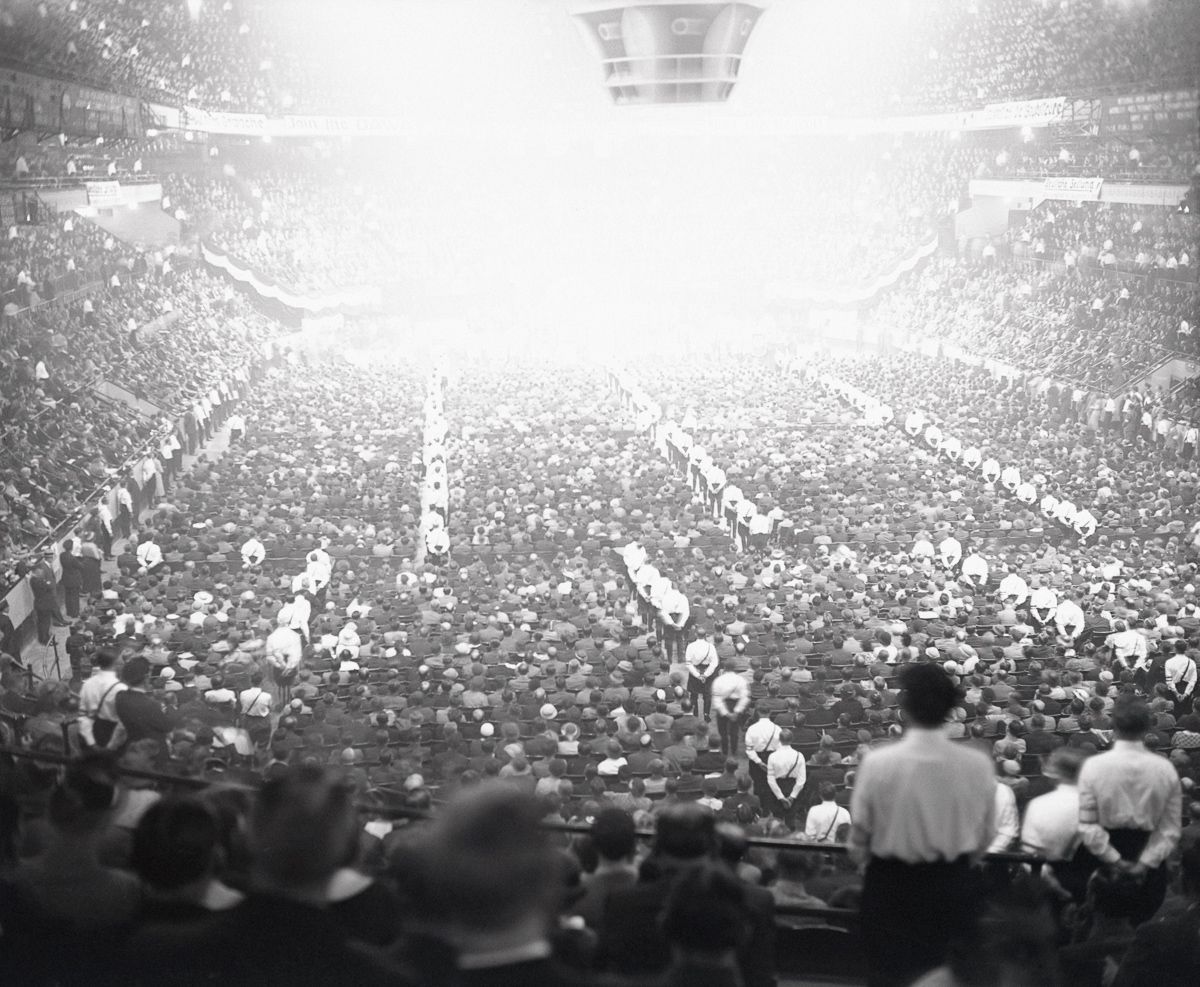
Nazi Rally in Madison Square Garden, May 17, 1939
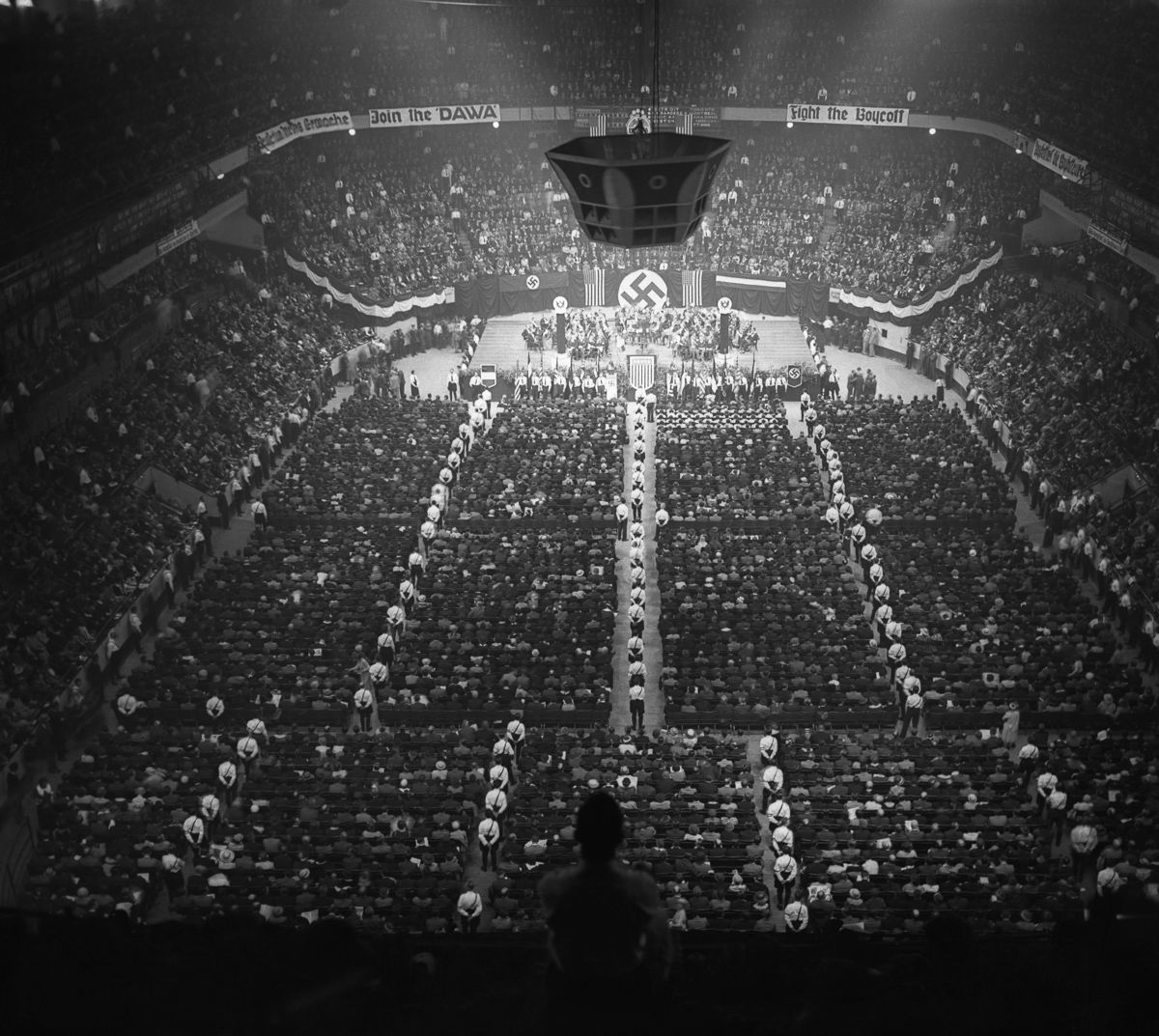
Nazi Rally in Madison Square Garden in pictures
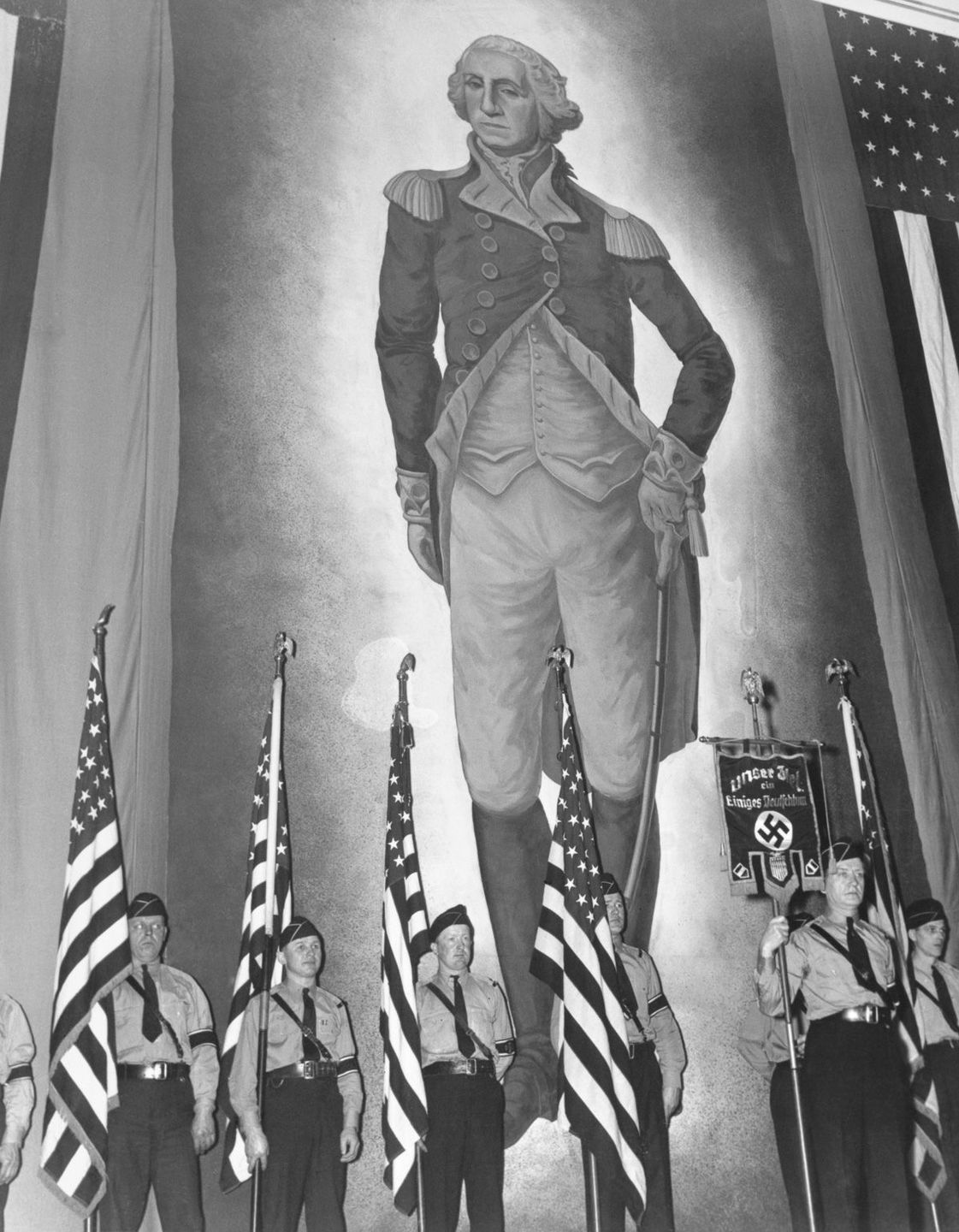
Young guards in front of a huge portrait of George Washington.
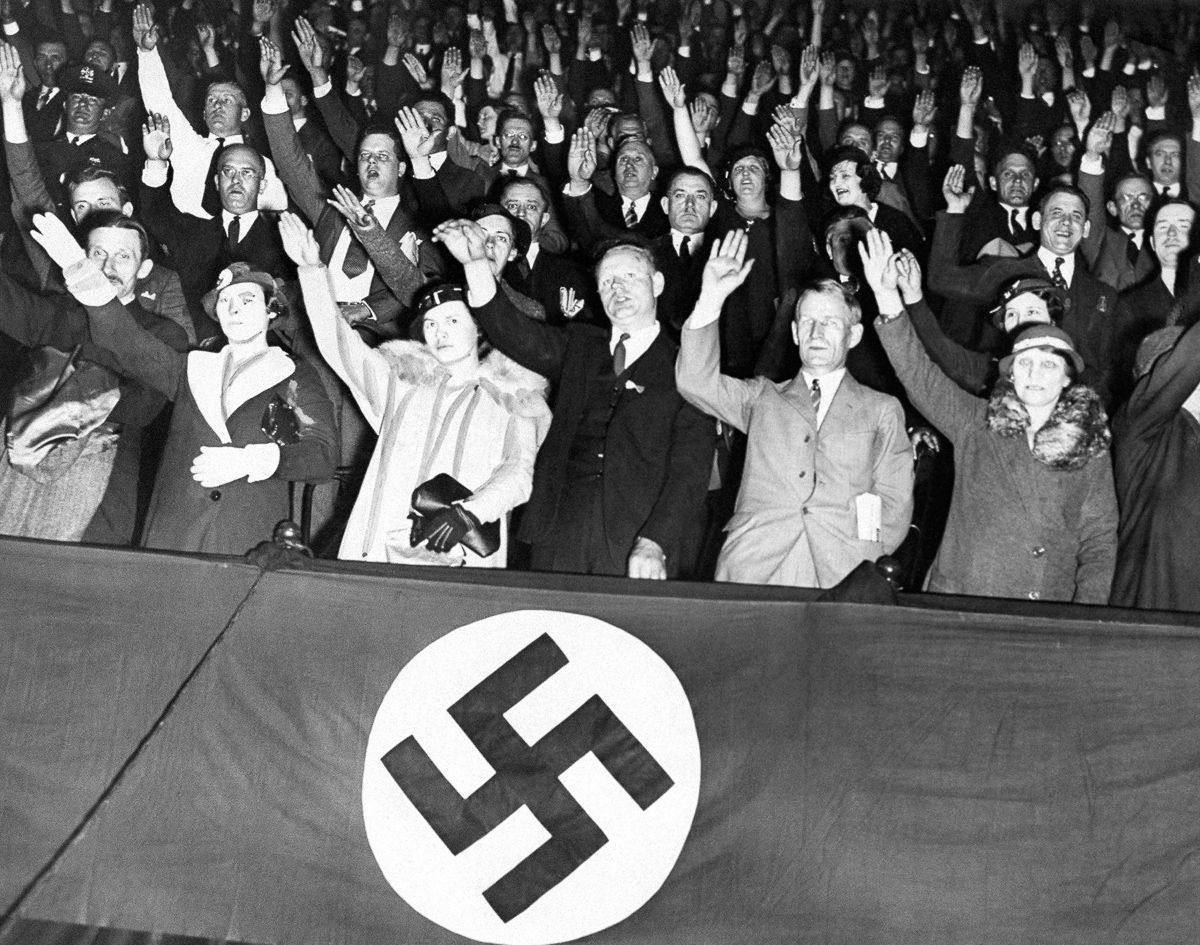
Nazi followers greet the speaker with a salute.
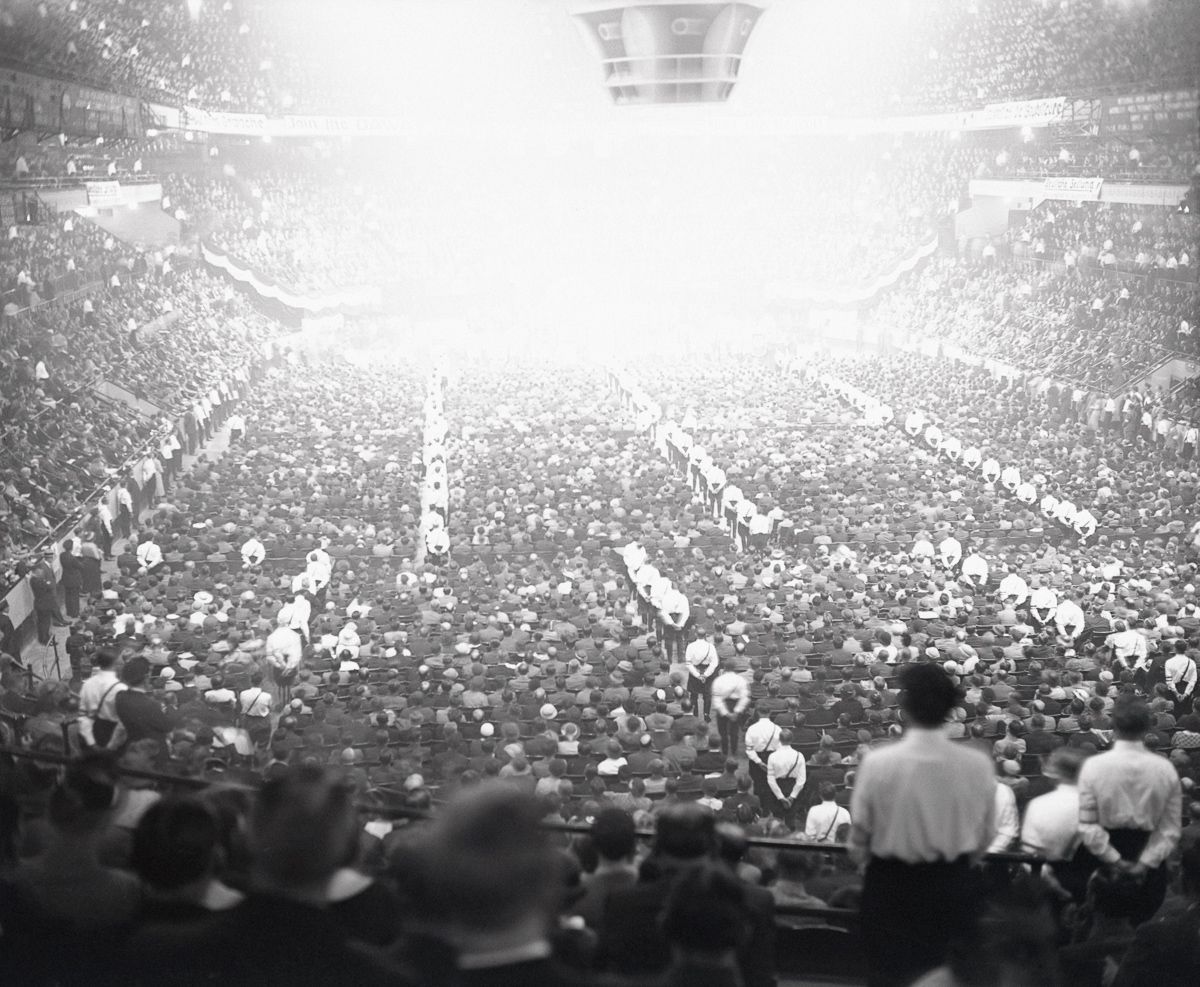
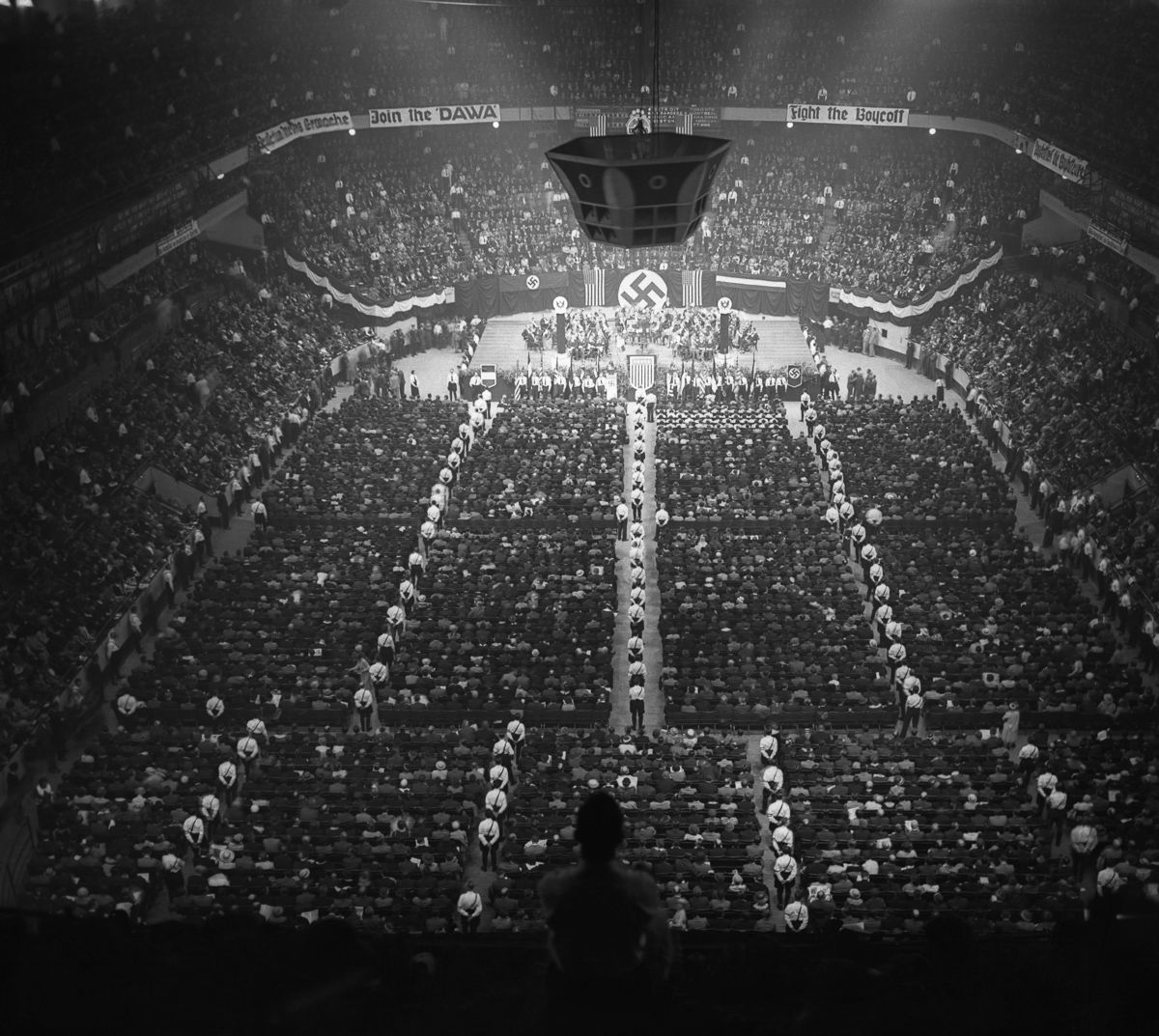
May 17, 1934. A mass meeting of members of the Friends of New Germany.
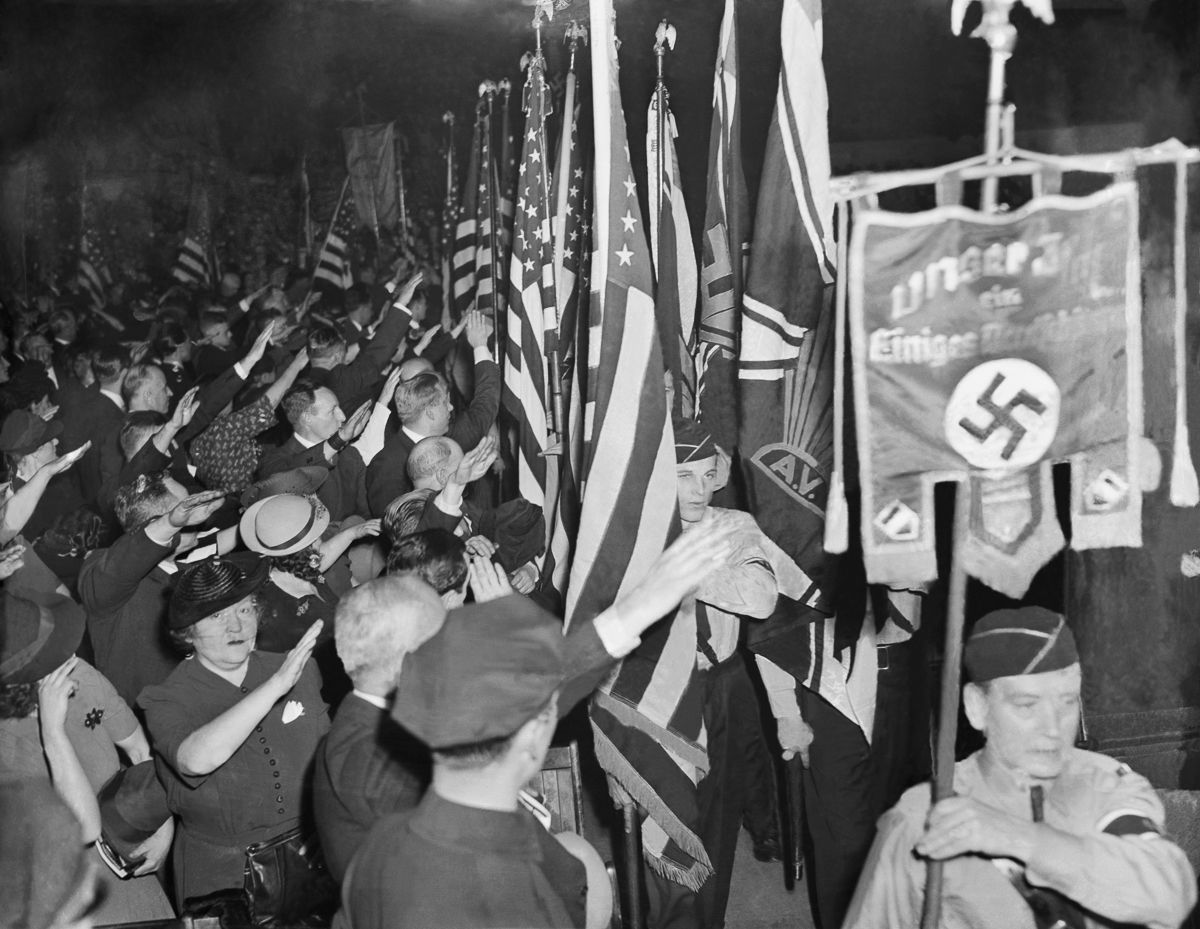
People greeting the banner of the German-American Union.
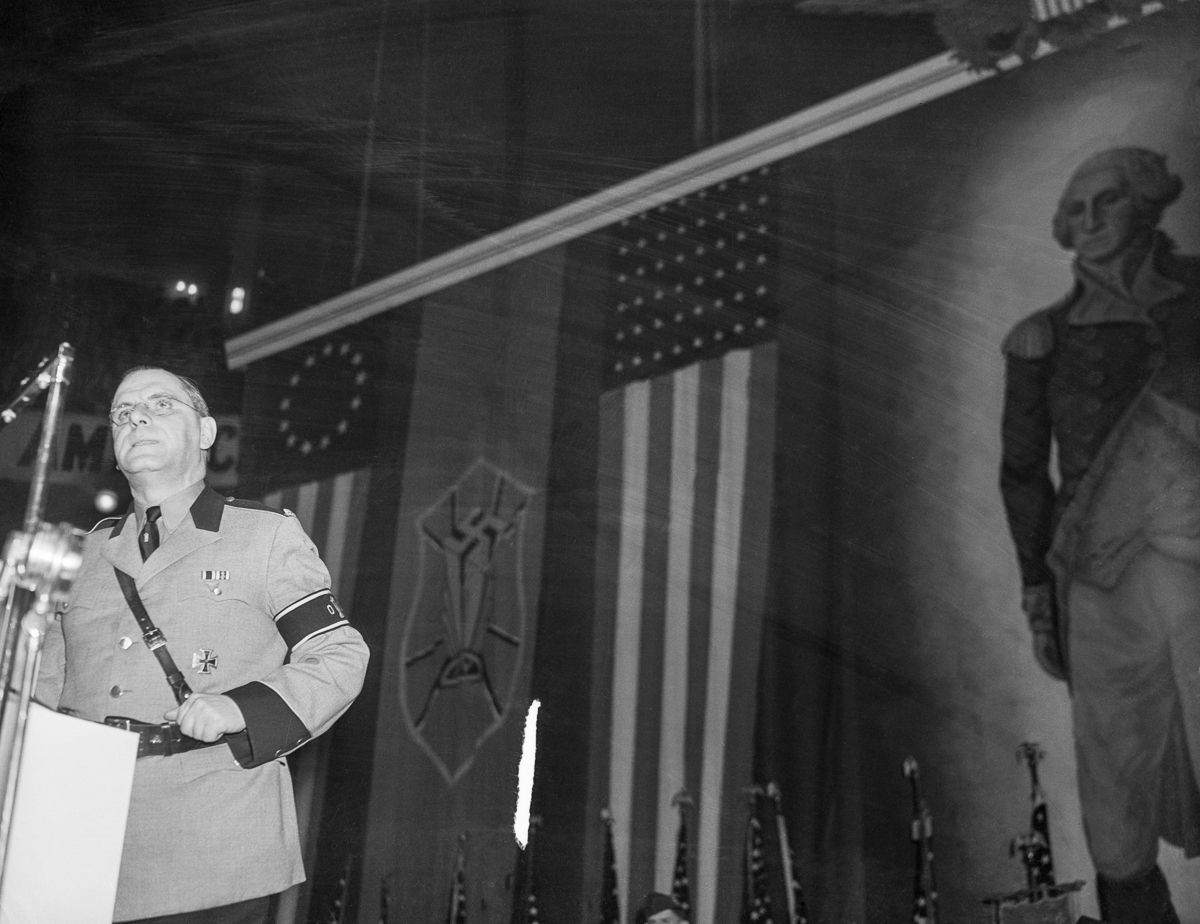
Leader of the German-American Union Fritz Kuhn addresses the rally participants, February 1939.
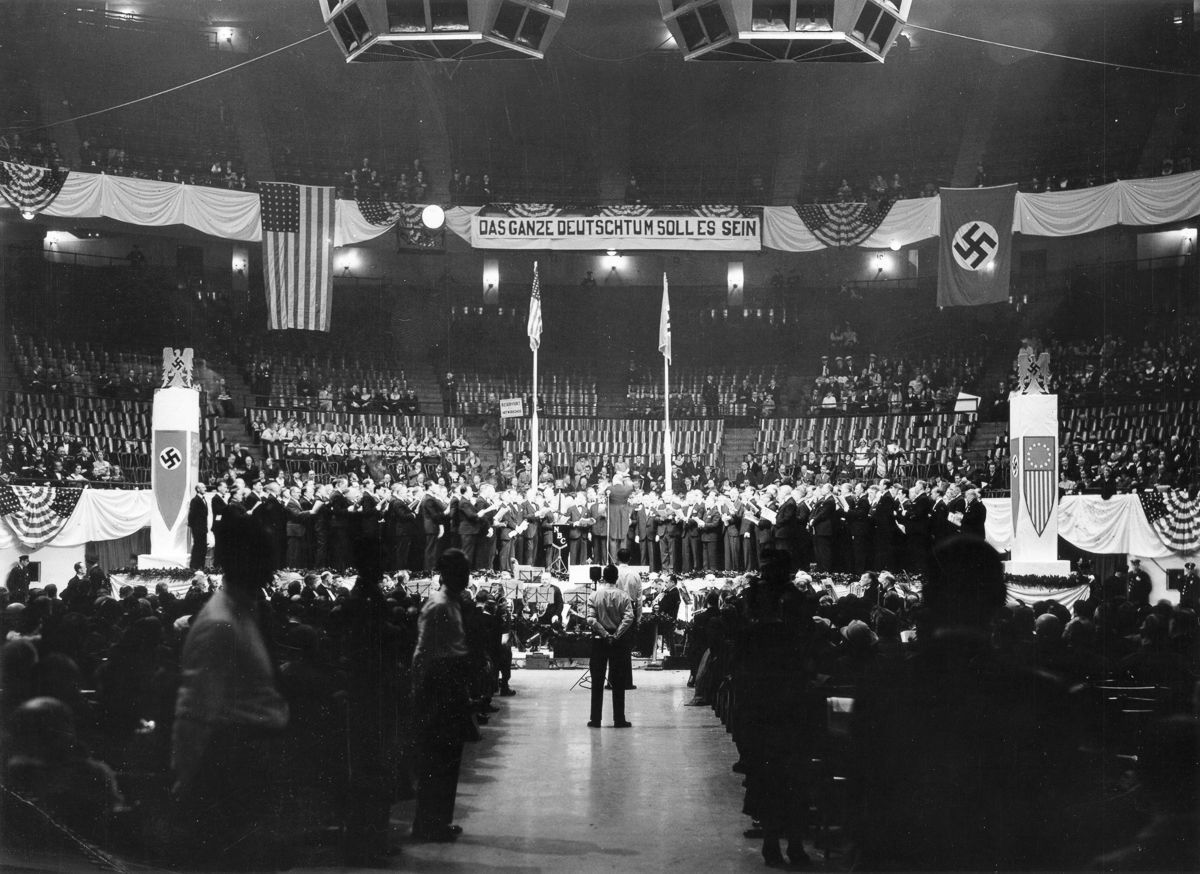
Celebrations of the arriving of the German settlers to America, October 1935
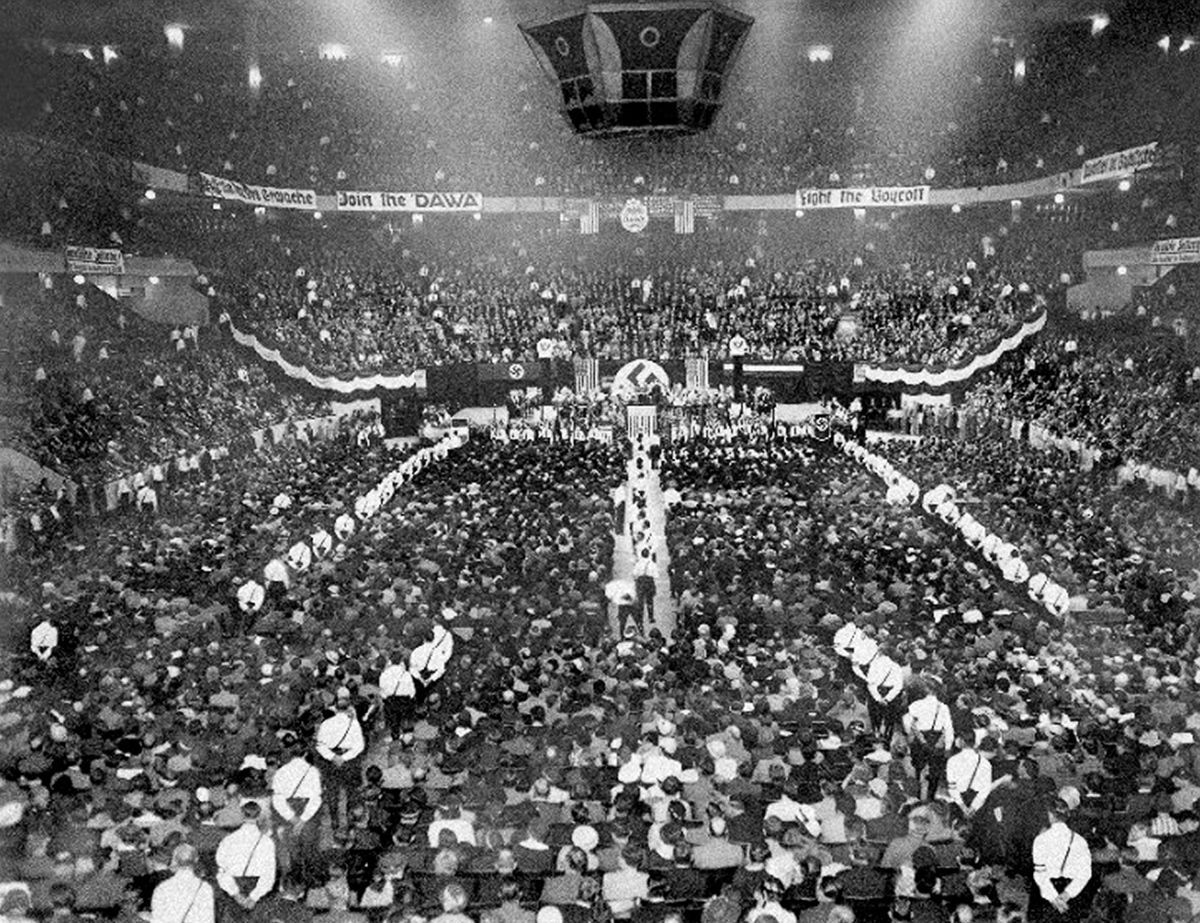
Another angle of the Nazi Rally in New York

1934
Сообщение Nazi Rally in Madison Square Garden in pictures, 1939 появились сначала на Old Pictures.
]]>Сообщение Kaiser Wilhelm II and Tsar Nicholas II, 1905 появились сначала на Old Pictures.
]]>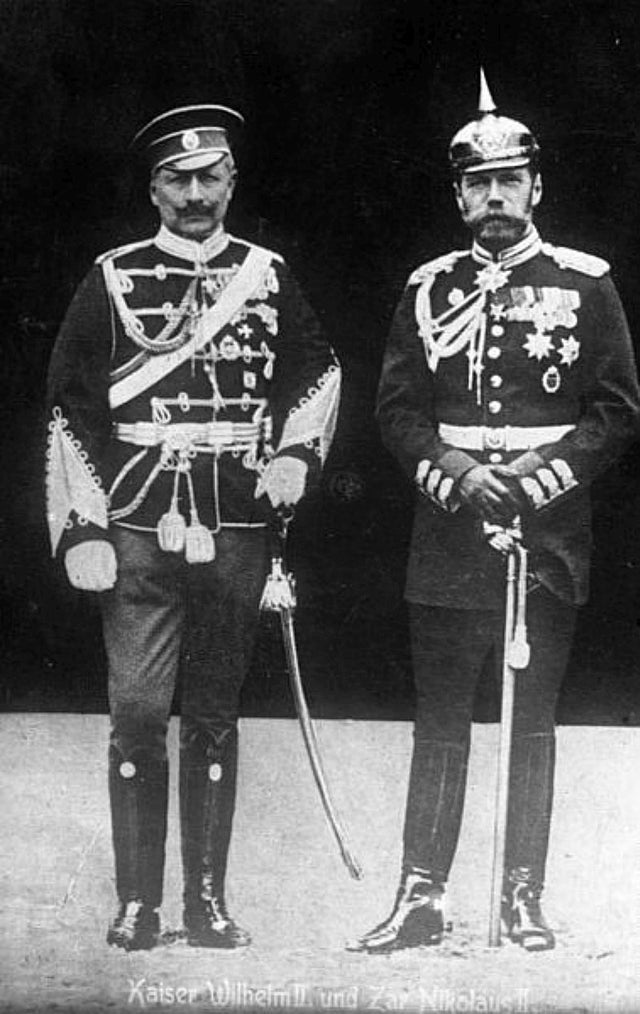 In this photo German and Russian Emporors, Kaiser Wilhelm II and Tsar Nicholas II, wearing each others’ uniform. They met on the russian ship Polar Star in summer of 1905, trying to sign a new treaty. We were missing Nicholas II in this picture of Nine European kings.
In this photo German and Russian Emporors, Kaiser Wilhelm II and Tsar Nicholas II, wearing each others’ uniform. They met on the russian ship Polar Star in summer of 1905, trying to sign a new treaty. We were missing Nicholas II in this picture of Nine European kings.
Kaiser Wilhelm II initiated that negotiations trying to create a bloc of states against England. Relations between Russia and England at that time were hostile. Here’s why Nicholas II accepted this proposal of the German Emperor.
Emperors also had plans to induce France to join the alliance.
Russian ruler signed the agreement with Wilhelm II on the island of Bjorke, without notifying the Minister of Foreign Affairs Lamsdorf.
This treaty contradicted Russia’s obligations within the Franco-Russian alliance. And Lamzdorf managed to convince the tsar to send William II a soft refusal, citing formal obligations towards France. The treaty was actually annulled by a letter from Nicholas II to Wilhelm II of November 13, 1905.
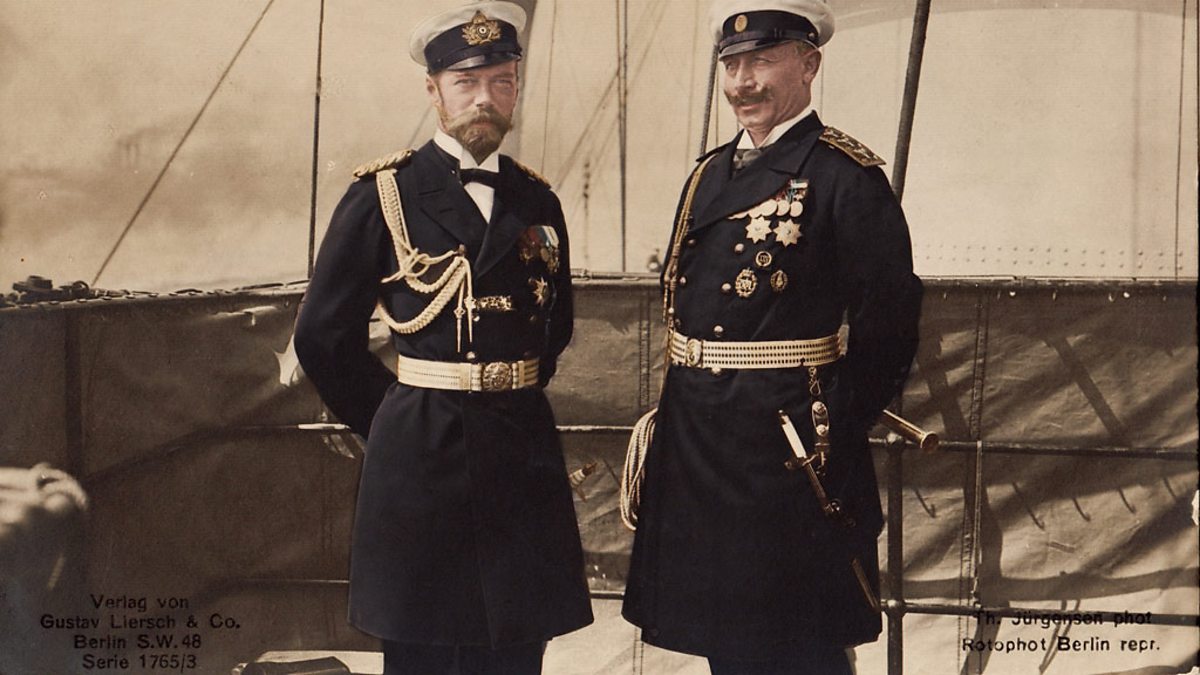
Сообщение Kaiser Wilhelm II and Tsar Nicholas II, 1905 появились сначала на Old Pictures.
]]>Сообщение WWI Christmas truce in 1914: pictures and facts появились сначала на Old Pictures.
]]>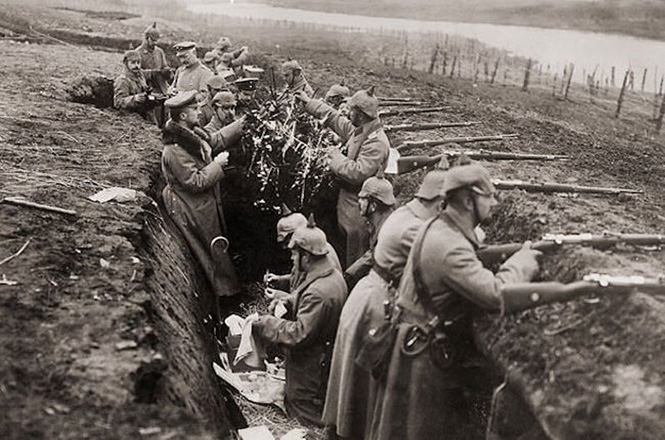 This fascinating story of the Christmas Truce of 1914 started on December 24, when the British watch noticed that the Germans were installing Christmas trees on their trenches’ parapet. Brits used to see machine guns there!
This fascinating story of the Christmas Truce of 1914 started on December 24, when the British watch noticed that the Germans were installing Christmas trees on their trenches’ parapet. Brits used to see machine guns there!
How the Christmas truce of 1914 became possible
Later reporters will call it a WWI Christmas truce of 1914. Of course, the decorations were primitive as they can be during wartime. The sparkling copper leading belts from shells decorated the Christmas trees. Garlands replaced bandages and telegraph tapes.
Read more: 100 most important pictures in history
But the fact itself did not fit in with the atmosphere of the hopeless massacre that had prevailed here for the past few months! Very soon, Brits heard the German Christmas song, Stille Nacht.
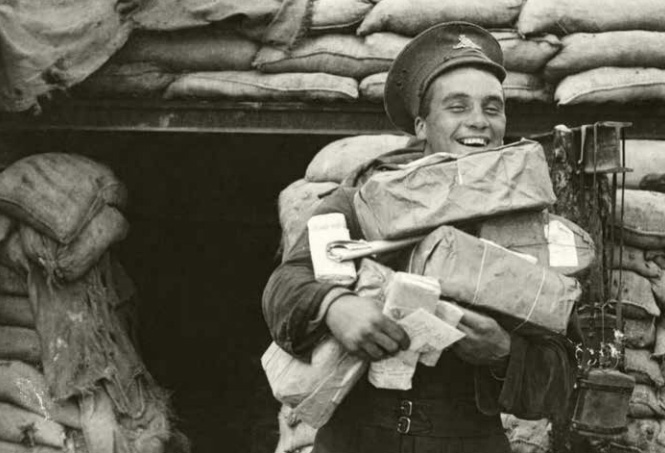
The British soldier is going to the no-man land to exchange Christmas gifts.
The shooter of the Royal Scottish Guards Graham Williams recalled that evening much later:
I was in the trench, watching the German line of defense. I was thinking about how different this holy night was from those that I had before … When suddenly lights appeared here and there near the German trenches. The light came from the candles lit on Christmas trees. The candles burned evenly and brightly in the calm and frosty evening air. Other sentries rushed to wake the sleeping people. “Look what is happening!”
And at that moment, the enemy began to chant Stille Nacht, Heilige Nacht. In fact, it was the first time I heard then this hymn, which was not so well known in our country. The Germans finished singing, and we thought we had to respond with something. And we sang the psalm First Nowell, and when we finished, there was friendly applause from the German side. They followed with another Christmas song, beloved by the Germans – O Tannenbaum. The Kaiser’s soldiers began to go out to the neutral zone with exclamations: “Merry Christmas, British!” They carried gifts in their hands instead of weapons.
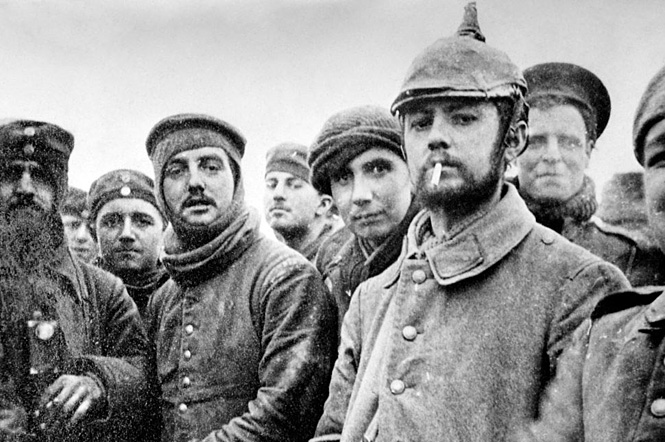
WWI Christmas truce in 1914
Here’s how the Germans and the British soldier began to go out to no man’s land to celebrate WWI Christmas truce of 1914. An English officer recalls:
I looked out of the trench and saw four German soldiers emerging from their trenches and heading in our direction. I ordered two of my men to meet the “guests”, but without weapons, since the Germans were not armed. But my guys were afraid to go, so I went alone. When the Germans approached the barbed wire, I saw that they were three privates. One of them said in English that they only want to wish us a Merry Christmas.
I asked what order the Germans received from the officers since they walked in our direction. They replied that there was no order, they went without permission. We exchanged cigarettes. When I returned to the position, the trenches were empty. I was surprised to find a crowd of 100-150 British and German soldiers. They laughed and celebrated. After a while, I noticed two German officers and through an interpreter told them that they should meet in a no man’s land and without weapons. One of the enemies admitted that he dreamed of an imminent end to the war, and I agreed with him.
Exchanging the Christmas gifts in the trenches
The soldiers of both armies received Christmas parcels from home. They could exchange small gifts: food, tobacco, various alcohol, even buttons, and hats were used. More than one hundred thousand Germans, British and French along the entire Western Front, stopped killing each other that night. Right between the lines of the trenches, the military priests performed the Christmas service.
Instead of organs of city cathedrals, soldiers sang. Former enemies together collected and buried the bodies of the killed, decomposed for months in funnels. They performed funeral services and prayers together.
In some front sectors, the truce lasted only one night, but in some places, the WWI Christmas truce of 1914 lasted a week until the New Year. It turned out that propaganda clichés are inexpensive: having started to communicate, the “Hans” and “Tommy” quickly realized that their opponents were not all the fiends from hell. Hatred disappeared, giving way to the friendliness of people in an equally bad situation.
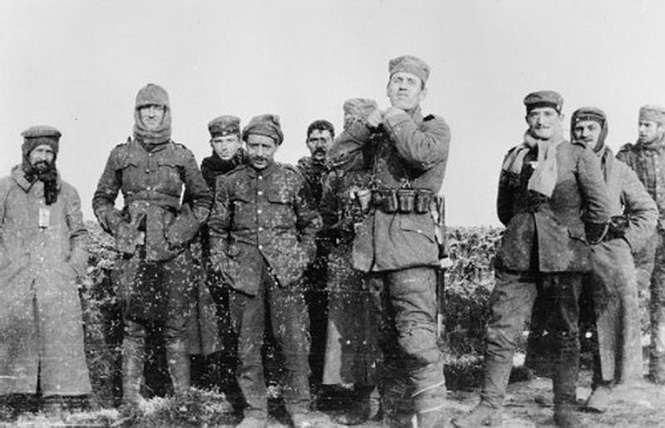
The Christmas of 1914 at Ypres
The football match during the Christmas truce
After the nightly Christmas services and the exchange of gifts, the miracles continued on the very day of Christmas. The soldiers came out of the trenches again and began to play football in the no-man land!
The bars of the gate were stakes in the ground. A stew can could serve as a ball. Each team could have an arbitrarily large number of players: no one really cared about the rules.
Ironically, the soldiers played football near Ypres’s town, which will give a name to the most deadly gas of WWI. The Yperite gas, or the Mustard gas, was dangerous because no WWI gas mask could stop it.
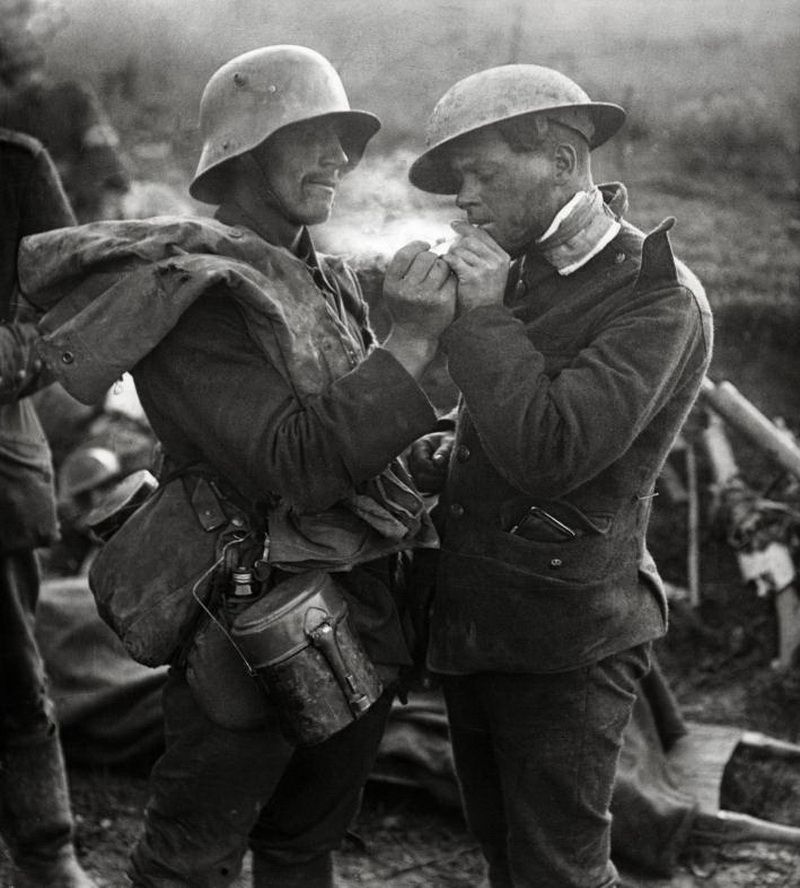
German and British soldier during the Truce
The punishment
When information about the soldier’s willfulness reached the authorities, the reaction on the WWI Christmas truce of 1914 was immediate. The guilty were punished, and the fire began. The commander of the British II Corps, General Horatio Smith-Dorren, issued an order prohibiting any communication with the enemy. The commander of the Scottish Guards, Sir Ian Calhoun, was nearly shot for “aiding the enemy.” Only the personal intervention of King George V saved an officer. The King considered it unethical to shoot a knight and a relative of his prime minister.
By the way, some germans expressed dissatisfaction with the “outrageous” fact of fraternization with the enemy. The little known corporal from the 16th Bavarian Reserve Infantry Regiment was the one among them. Corporal’s name was Adolf Hitler.
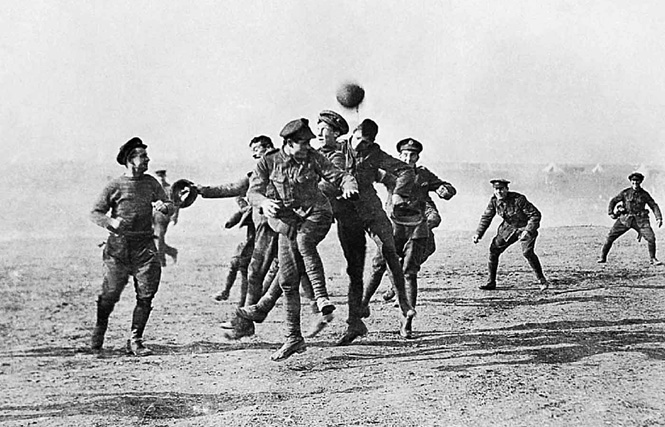
Soldiers playing football during WWI Christmas truce in 1914
They tried to hide the Truce.
For almost a week, governments and military censorship managed to hide information about the unauthorized Christmas truce in 1914. But still, the truth soon surfaced: the New York Times reported on an unusual event, and in early January, the British Daily Mirror and Daily Sketch reprinted American photographs.
Governments tried to suppress any attempts to reconcile the soldiers on major Christian holidays in advance. Since 1915, the British artillerymen were ordered to increase the intensity of German positions on the eve of Easter and Christmas.
Commandant reshuffled units in different sectors of the front in order to prevent the establishment of any comradely ties with the Germans. There was no more such a Christmas truce as it was in 1914.
Сообщение WWI Christmas truce in 1914: pictures and facts появились сначала на Old Pictures.
]]>Сообщение Nine European kings in one photo, May 1910 появились сначала на Old Pictures.
]]>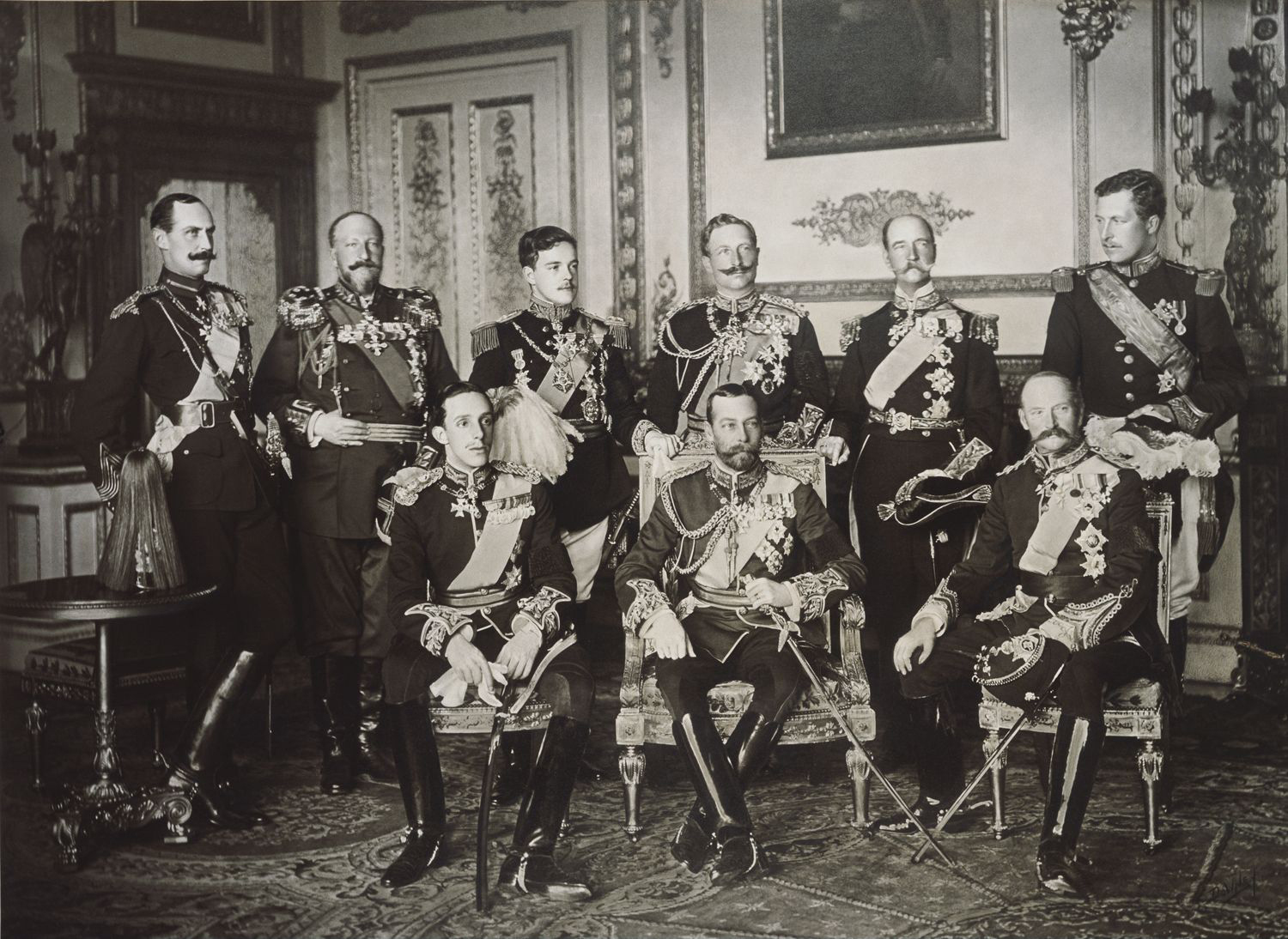 Ironically, these nine kings will be at war (WWI) less than five years after this photo was taken.
Ironically, these nine kings will be at war (WWI) less than five years after this photo was taken.
Nonetheless, there was no high tension between monarchs on May 20, 1910. On this day, masters of the W&D Downey photo studio took this historical image of Nine European Kings at Windsor Castle.
They never gathered together before this day.
Standing: King Haakon VII of Norway, King Ferdinand I of Bulgaria, King Manuel II of Portugal, German Emperor and King of Prussia Wilhelm II, King George I of Greece, and King Albert I of Belgium.
Sitting: King of Spain Alfonso XIII, King of Great Britain and Ireland, George V, and King of Denmark Frederick VIII.
Nine Royal relatives in a photo
There was a reason for all these nine kings to pose for a single photo. All of them were connected with family bonds. For example, Frederik VIII of Denmark (sitting, far right) was a daddy of Haakon VII of Norway (top left). The German ruler Wilhelm II of Germany (top, 3rd from the right) was a cousin of both George V of the United Kingdom (bottom center) and Queen Maud of Norway, who was wife to Haakon VII of Norway and sister to George V of the United Kingdom. Let’s not forget that Haakon VII of Norway and George V of the United Kingdom were brothers-in-law. George V of the UK and Queen Maud of Norway’s mother was incidentally Alexandra of Denmark, sister to Frederik VIII of Denmark. Here’s how Frederik VIII of Denmark was also the uncle of George V of the United Kingdom.
Read more: US WWI propaganda posters.
Again, George was a grandson of Queen Victoria and Prince Albert and the first cousin of Russian King Nicholas II of Russia and Kaiser Wilhelm II of Germany. By the way, Nicholas II also could be present in this photo, but he didn’t manage to come in time.
What will happen to the Nine Kings after this photo
All these elegant and brilliant representatives of their dynasties came together to send off the last journey of the English king Edward VII. They do not yet know what awaits them in the very near future.
The revolutions and social transformations will remove four of nine of these monarchs. One of them will be killed (George I of Greece was shot in March 1913 in Thessaloniki).
In less than five years, Britain and Belgium will fight side by side against Germany and Bulgaria in WWI. Peter of Serbia (another king missing in this photo of the nine) will fight on King George’s side.
Only five of these nine monarchies will survive Norwegian, Spanish, English, Danish, and Belgian.
Read more: Adolf Hitler during WWI: historical facts and pictures
Сообщение Nine European kings in one photo, May 1910 появились сначала на Old Pictures.
]]>Сообщение Schienenzeppelin: the Rail Zeppelin, June 1931 появились сначала на Old Pictures.
]]>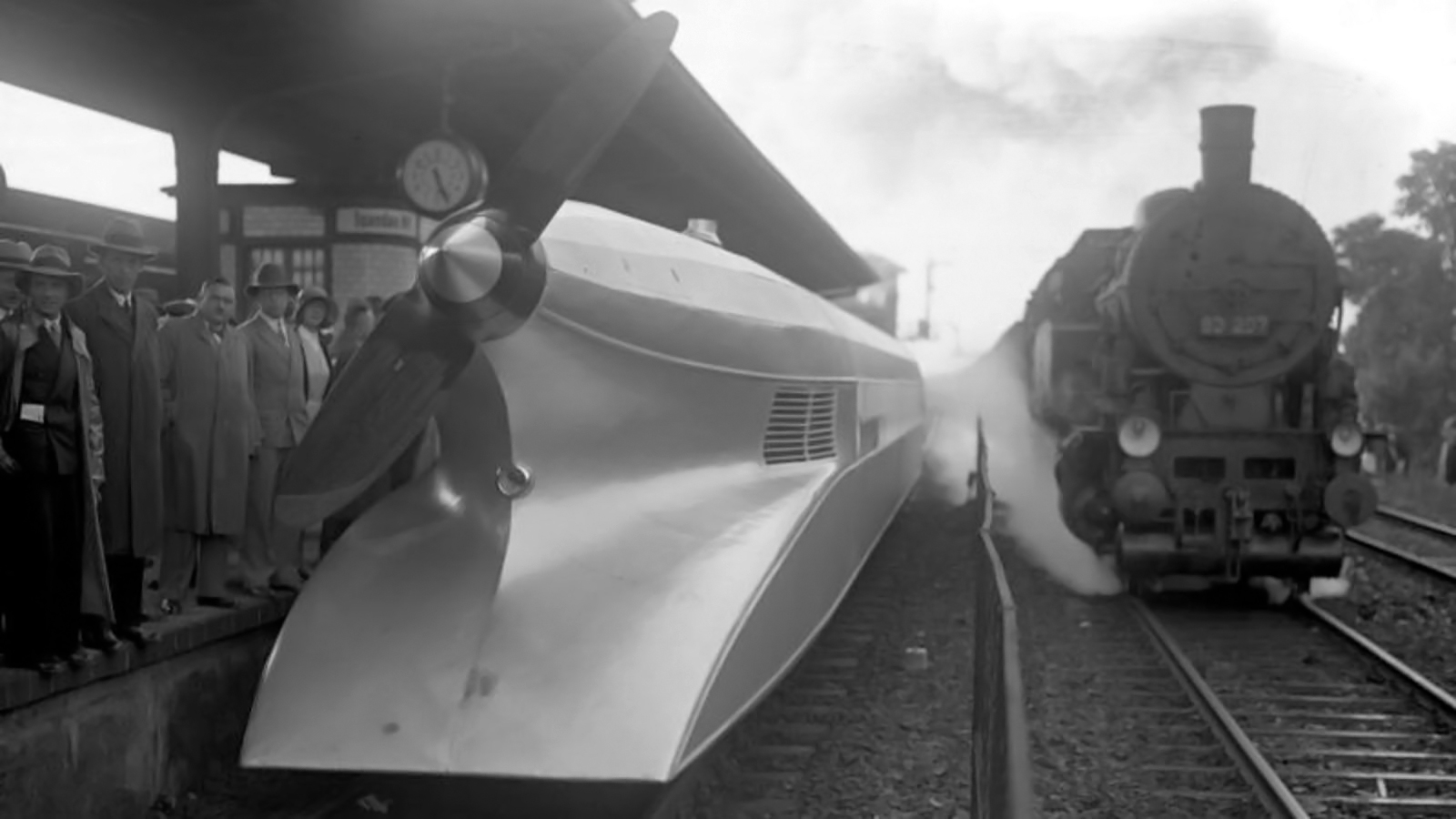 Germans called Schienenzeppelin the ‘Cigar on the rails.’ This device set the world record speed for railroads, although Count Zeppelin, the inventor of rigid airships, had nothing to do with the project.
Germans called Schienenzeppelin the ‘Cigar on the rails.’ This device set the world record speed for railroads, although Count Zeppelin, the inventor of rigid airships, had nothing to do with the project.
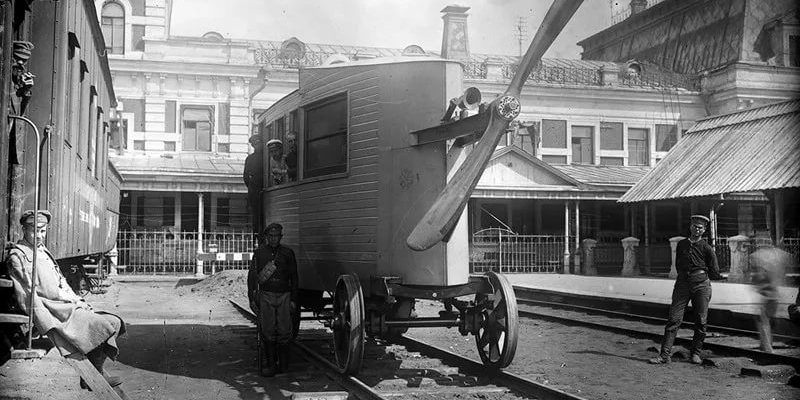
The Russian predecessor of the Schienenzeppelin, designed by Abakovskiy 1922.
A Russian start
Interestingly, the history of the Schienenzeppelin starts in Russia. A local engineer Abakovskiy completed the construction of a railroad car with an aircraft propeller in 1921. He named it originally “an aircar.” This Russian railroad car even made several trips and tragically crashed, taking seven people to the grave, including the inventor.
The Germans still found potential in this tragic story. Thus, engineer Franz Krukenberg created a 26-meter air locomotive with a design in the then fashionable Zeppelin style.
Read more: 100 most important pictures in history
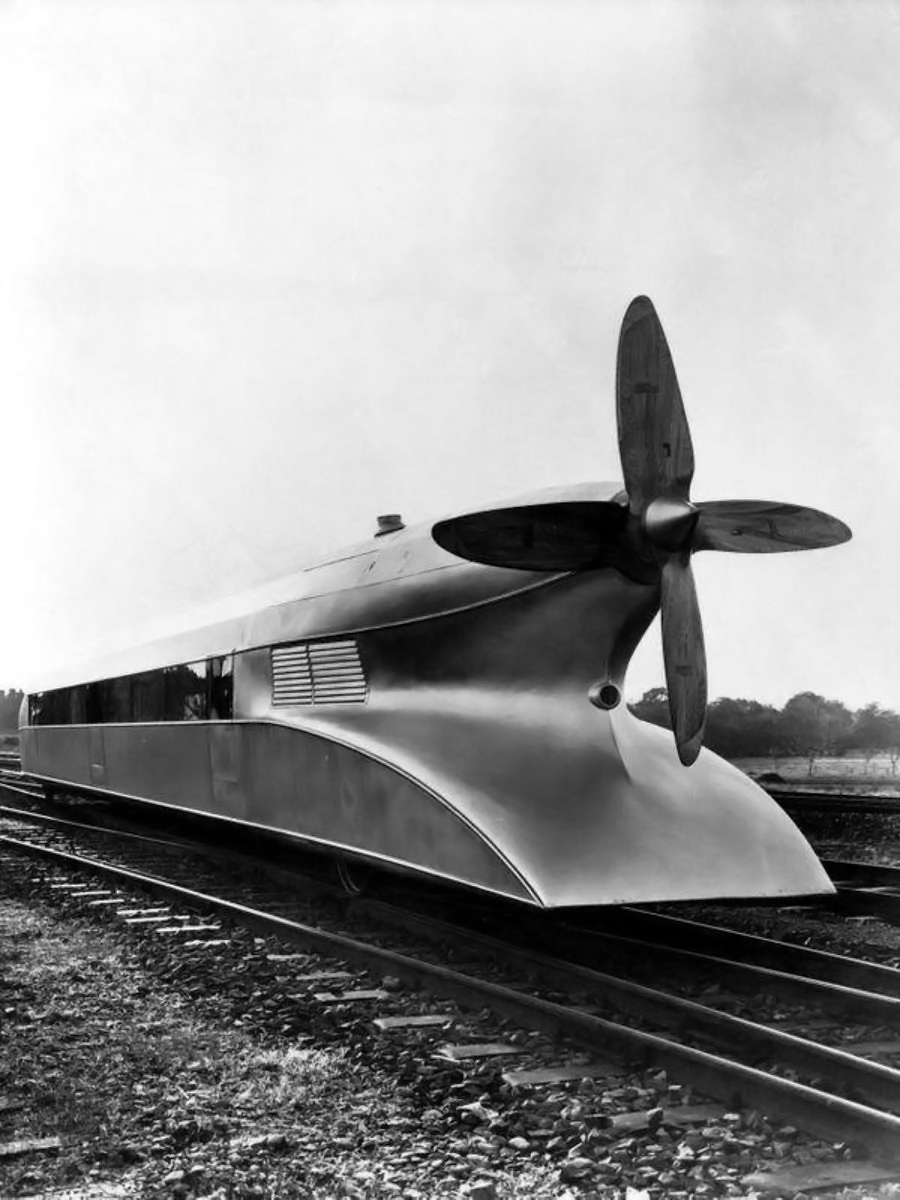
Schienenzeppelin had an extremely futuristic design
The speed records of the Schienenzeppelin
On May 10, 1931, this Schienenzeppelin recorded a speed of 200 kilometers per hour. It was made of aluminum. Its lightweight allowed it to hit the world speed records. The futuristic beauty beat its own record a few months later, hitting 230 kph. Yes, the German industry is good at setting speed records. After that, they began to roll this modernist invention all over Germany in order to demonstrate to the public. The Germans could not believe what they saw.
The Schienenzeppelin could carry up to 40 passengers, but not in luxury. The interior design was kept to a minimum, also due to weight concerns.
Read more: All Pulitzer Prize photos (1942-1967)
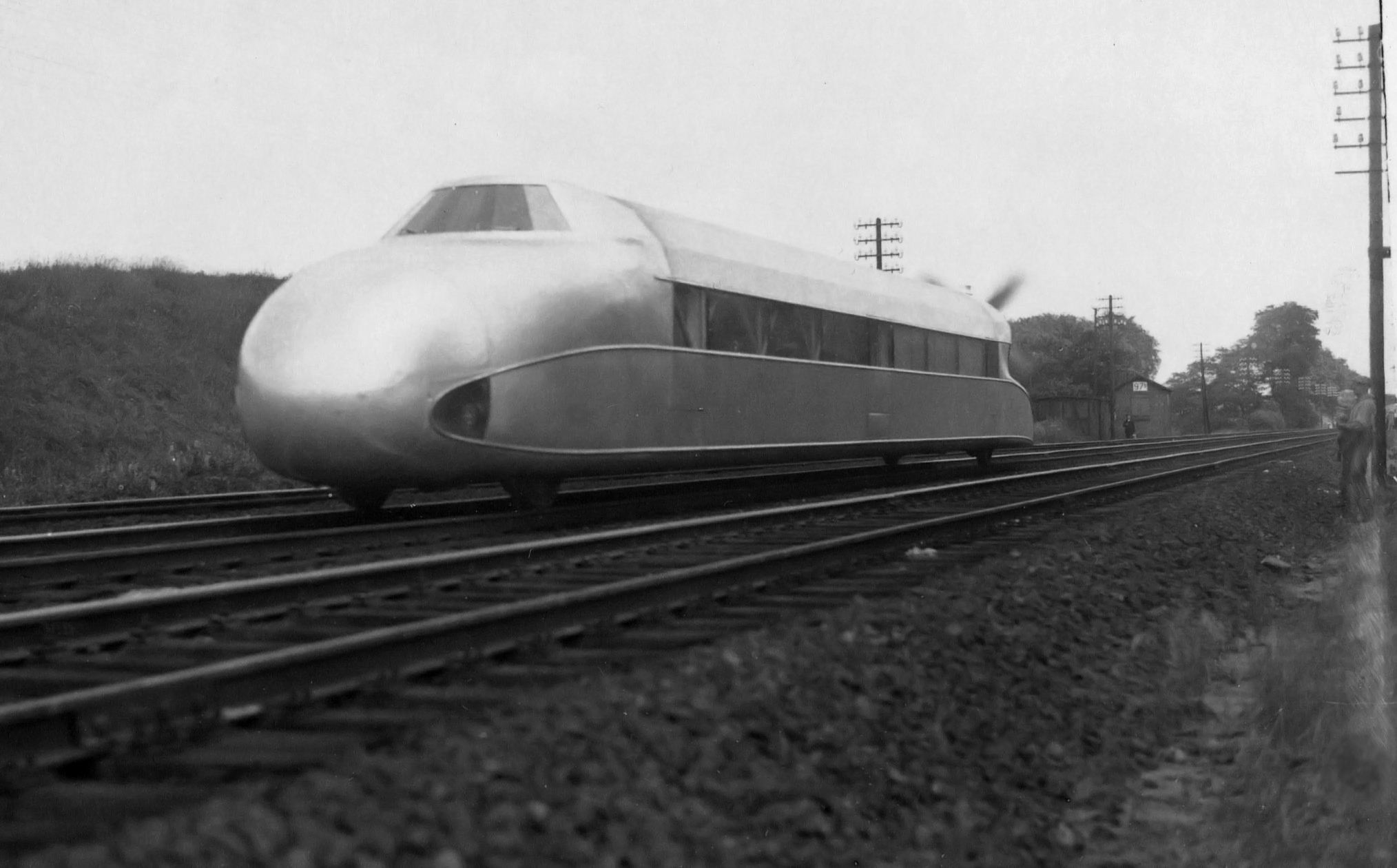
The vehicle was made of aluminum, and it was very light and fast.
Schienenzeppelin was impractical
However, the Schienenzeppelin turned out to be not very practical. The propeller was behind the zeppelin, so it was not possible to attach other cars to it. Schienenzeppelin could only stay as an autonomous and independent car. The trips were expensive and impractical. Aircar did not climb hills well and did not have a reverse gear.
Many believed that the rotating propeller was very dangerous for passengers. The express created powerful air currents when passing by at high speed. Rail Zeppelin was a pretty noisy beast. And the railroad pavements themselves weren’t perfect enough to handle ultra-high speeds.
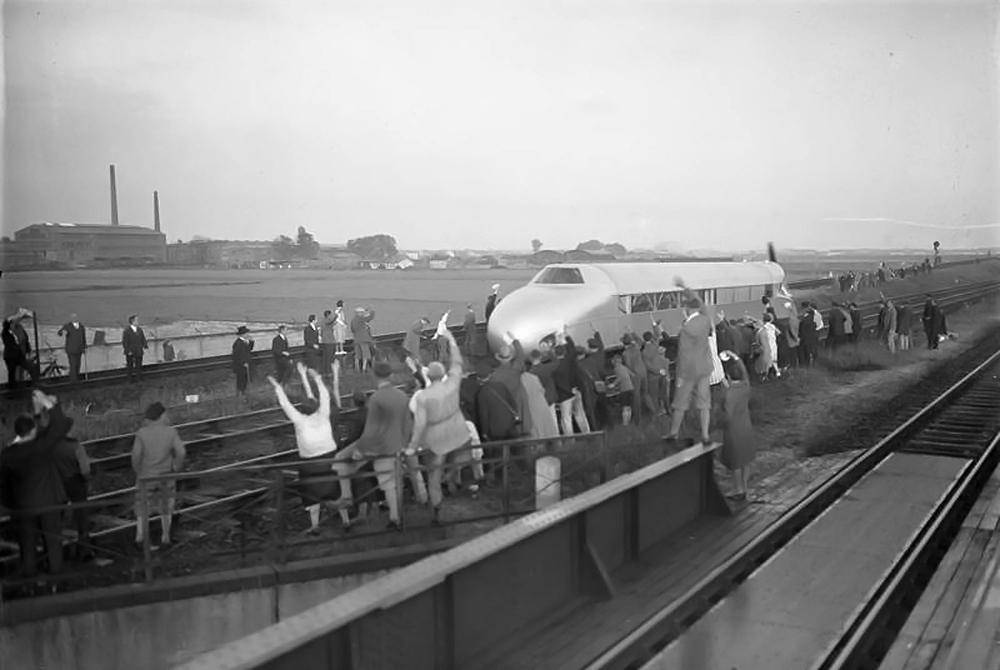
Nazis used Rail Zeppelin to demonstrate German tech superiority.
The last trip of the Schienenzeppelin
In short, operational shortcomings outweighed the beauty of the engineering idea. In 1939, the Germans disassembled the Rail Zeppelin. Schienenzeppelin completed its last trip on April 4, 1939. All the materials filled the needs of the German military industry during WWII.
Franz Kruckenberg continued to design trains for railways and died in 1965 at the age of 82.
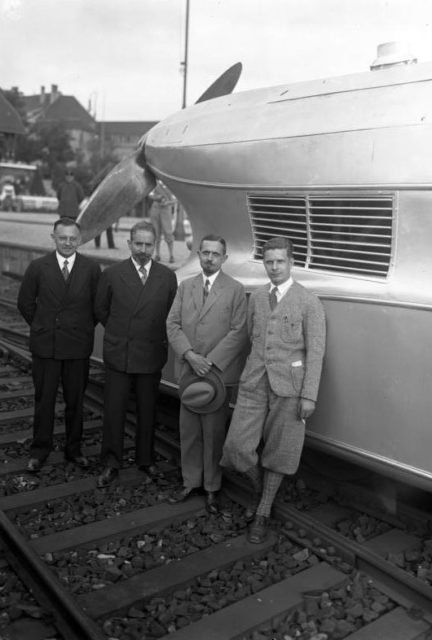
Rail Zeppelin team. Herr Kruckenberg is second from the left
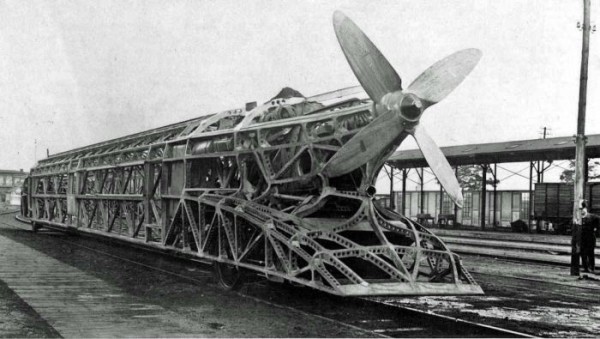
The construction phase, 1931
Сообщение Schienenzeppelin: the Rail Zeppelin, June 1931 появились сначала на Old Pictures.
]]>Сообщение German WWI submarine UB122 that spent 92 years underwater появились сначала на Old Pictures.
]]>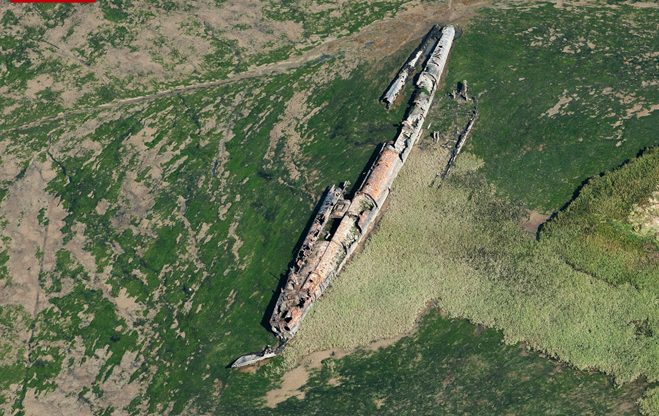 This decrepit german WWI submarine appeared on the surface 92 years after the last dive. We guess that if this U-boat UB122 were looking for a new job, its resume would have been extremely short. It left the shipyard of the Bremen in February 1918. And its career was over in November of the same year, with no combat record.
This decrepit german WWI submarine appeared on the surface 92 years after the last dive. We guess that if this U-boat UB122 were looking for a new job, its resume would have been extremely short. It left the shipyard of the Bremen in February 1918. And its career was over in November of the same year, with no combat record.
Another German submarine trophy
The end of the story of this German WWI submarine wasn’t heroic in any way. The vessel, which never fired any of its ten torpedoes, was handed over to the British, who decided to melt it down. However, upon entering the Thames estuary, the towing ropes collapsed, and the submarine suddenly sailed away. The escape ended at the swampy coast of Kent.
And yes, we remember that this German WWI submarine ended its days just like UB122, but at a different British shore.
It’s time to go up!
The history of this submarine surfaced at the end of 2013. Strong December tides pulled the boat closer to the shore.
Historians identified the submarine only after its inspection. According to archival records, in total, six German submarines were lost during the towing! Three of them – U122, U123, and UB122 – all this time were hiding somewhere in the local shallows.
Three British and 41 German boats sunk during WWI around this British coastal area.
Read more: Torpedo sticks out of a Soviet submarine, 1989
WWI is usually called the ‘first modern war’ – and the naval war. Many technologies were used for the first time. U-boat tech was one of them. Effective submarine combat was an especially new aspect of war. Germany concentrated on U-Boat production to fight the greater British flotilla and put pressure on its Atlantic units. German submarines had a massive surprise effect during the first years of WWI.
Сообщение German WWI submarine UB122 that spent 92 years underwater появились сначала на Old Pictures.
]]>